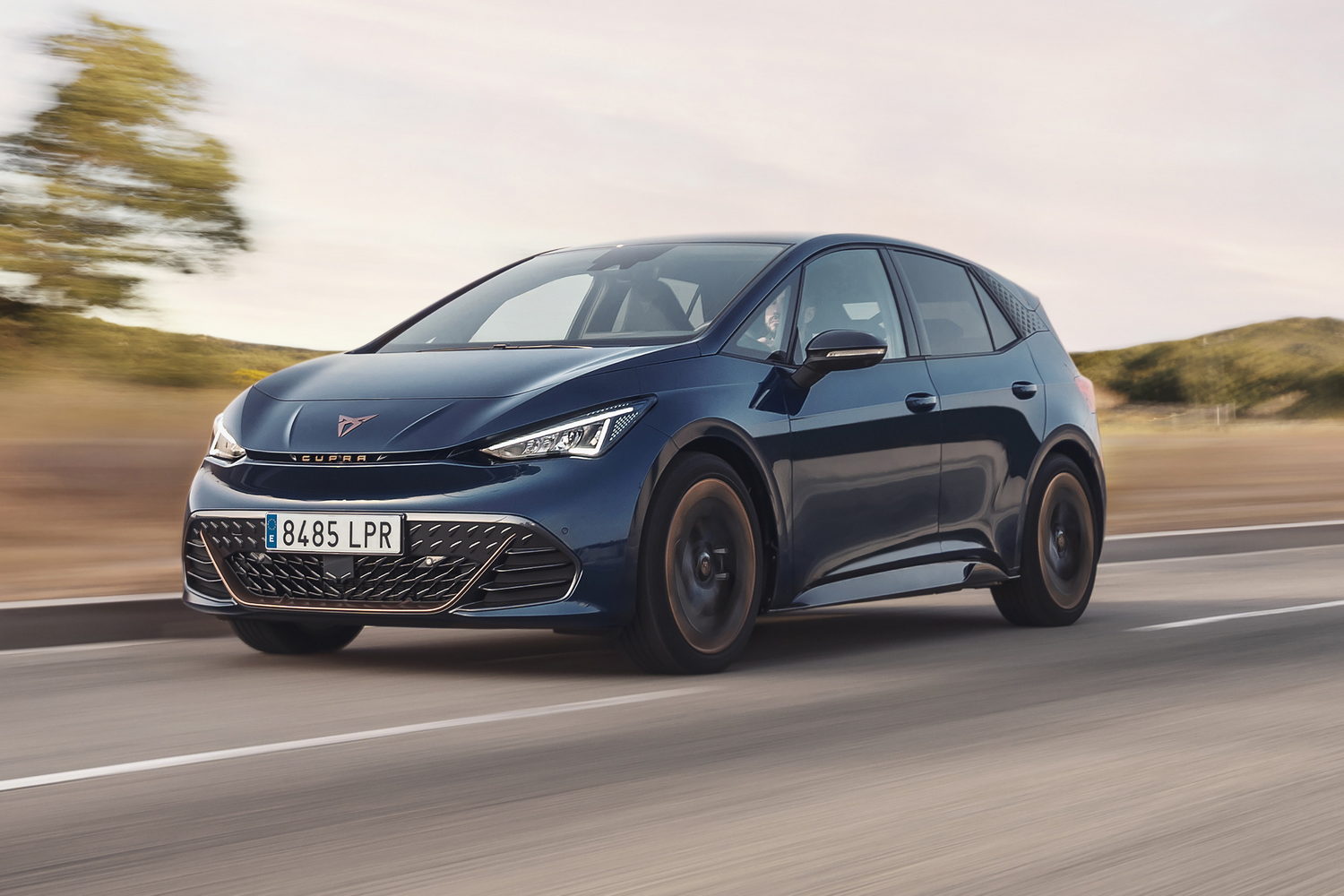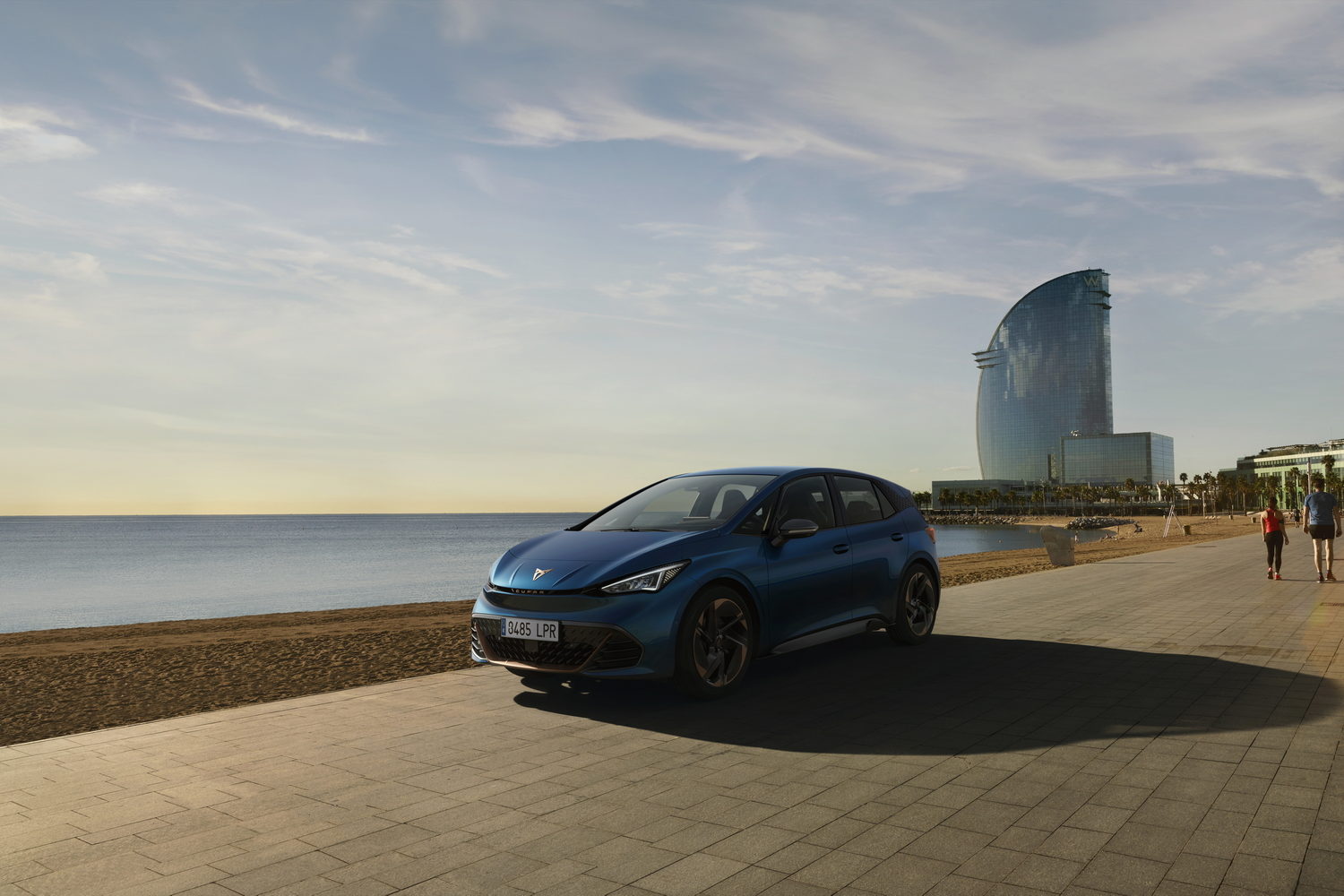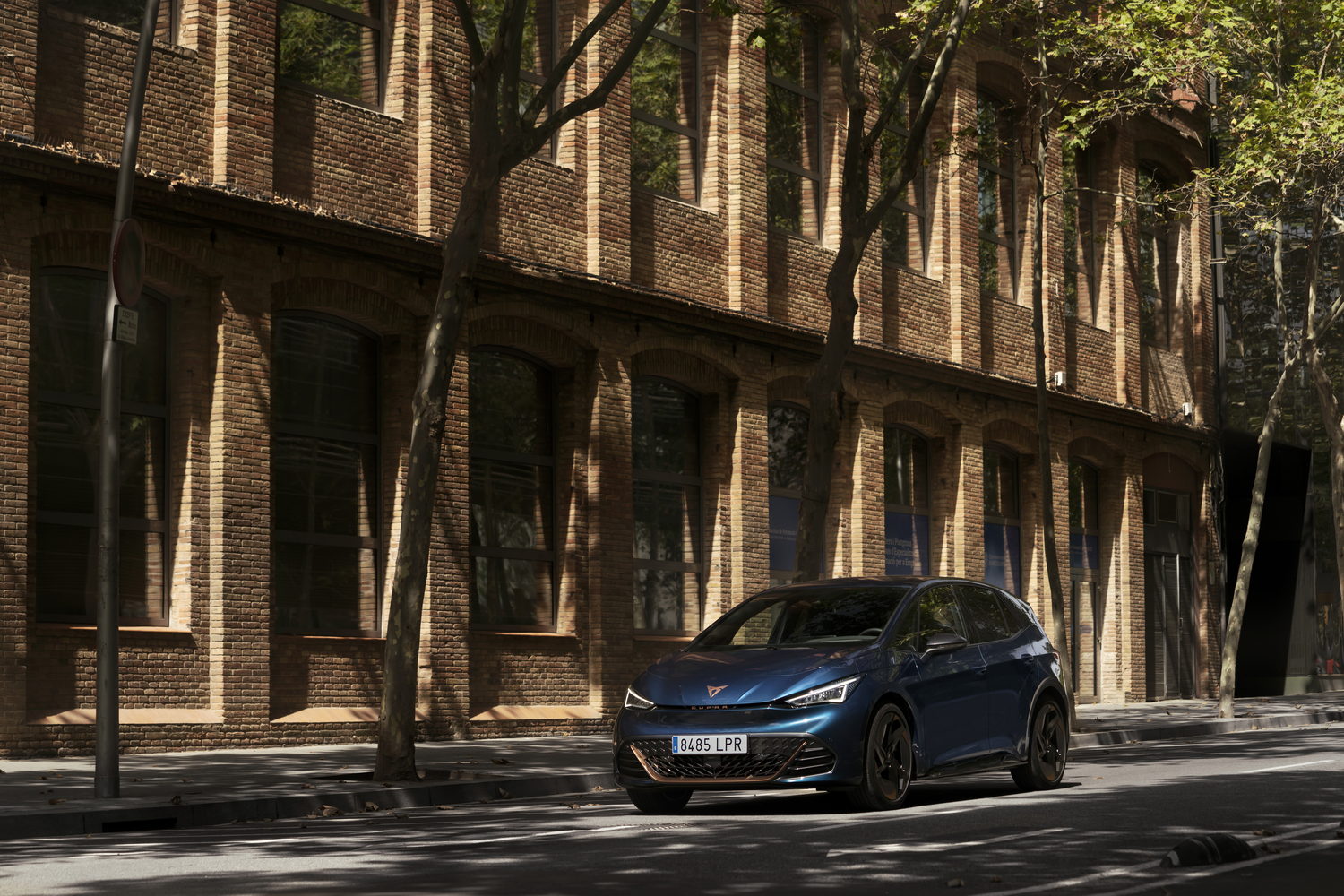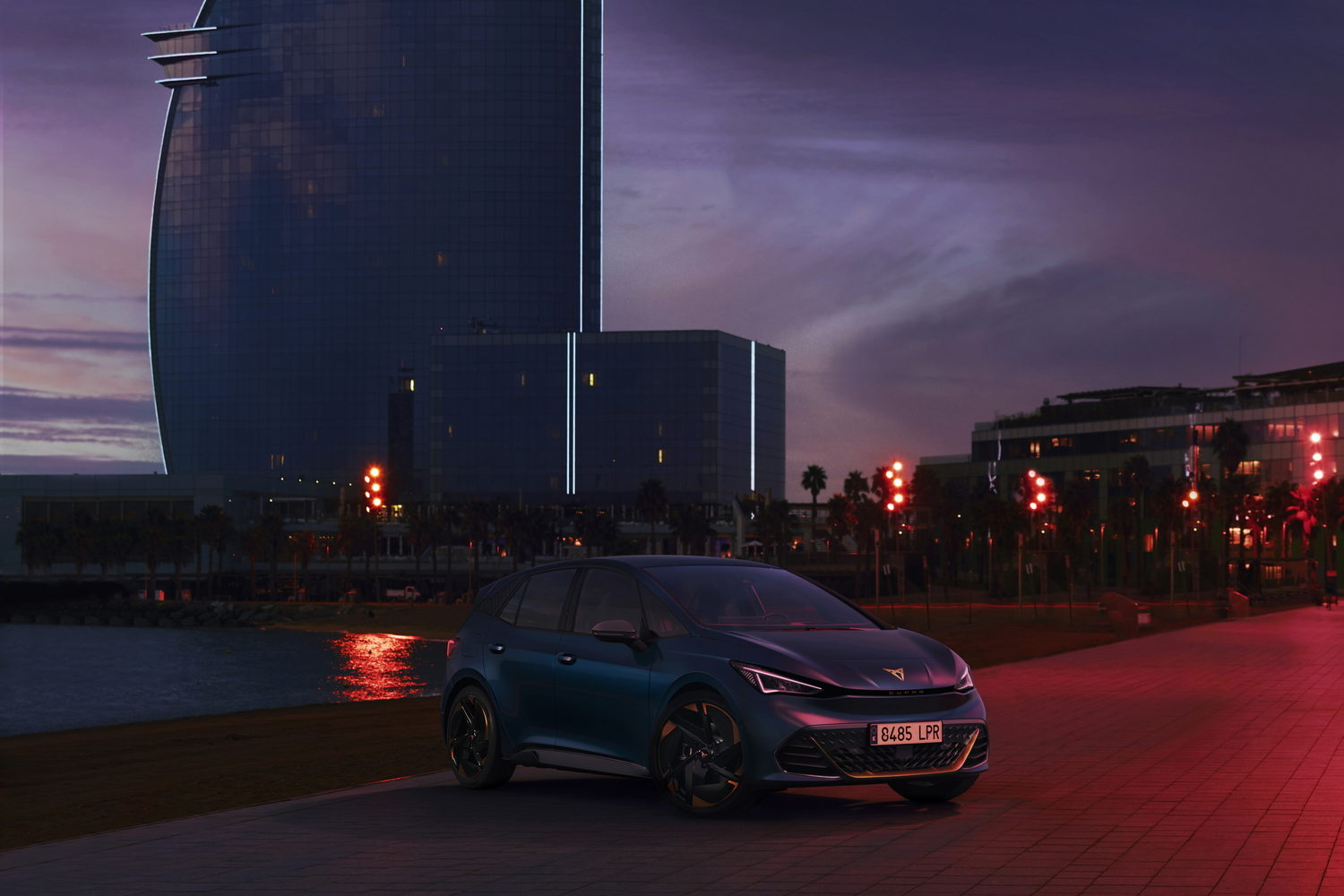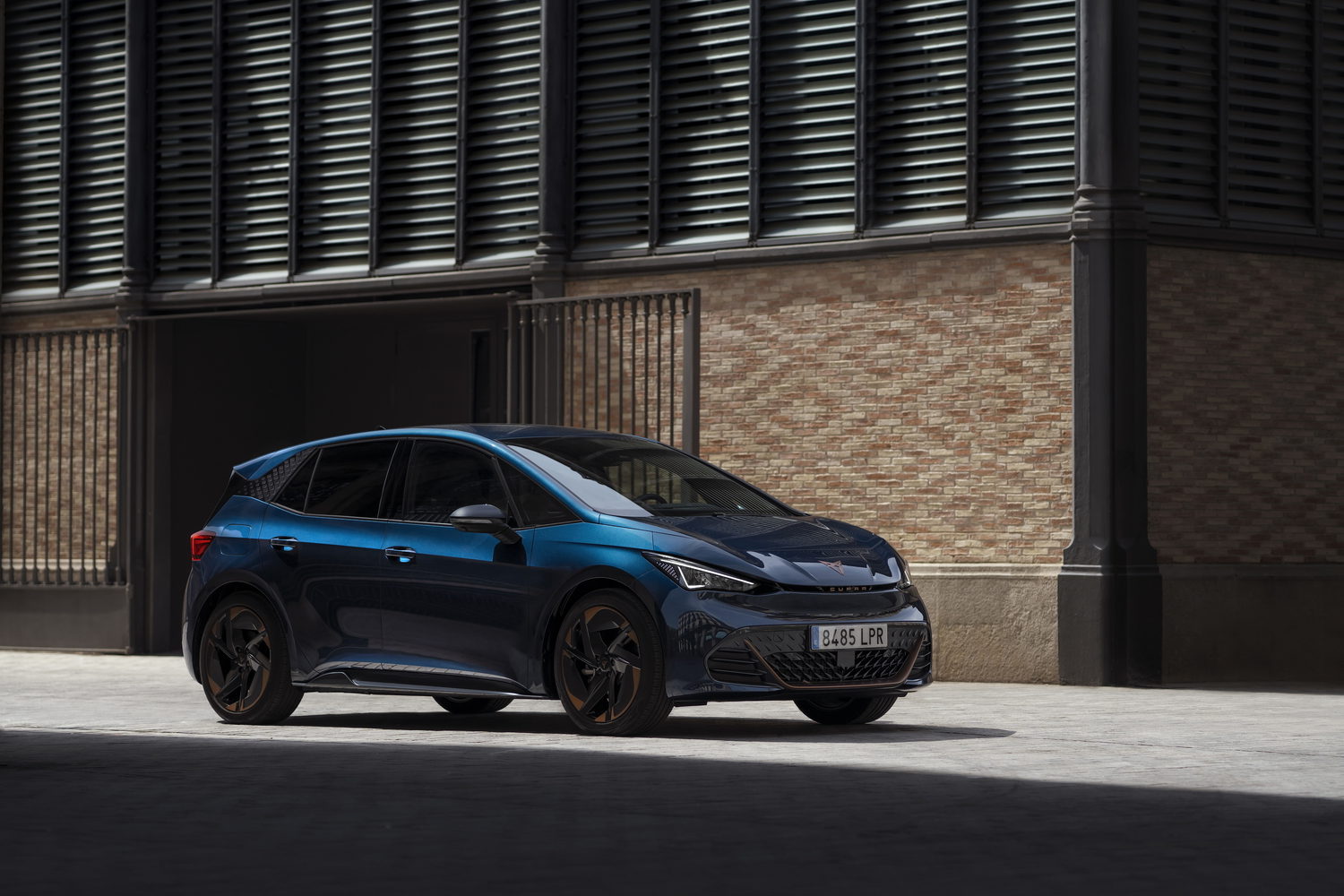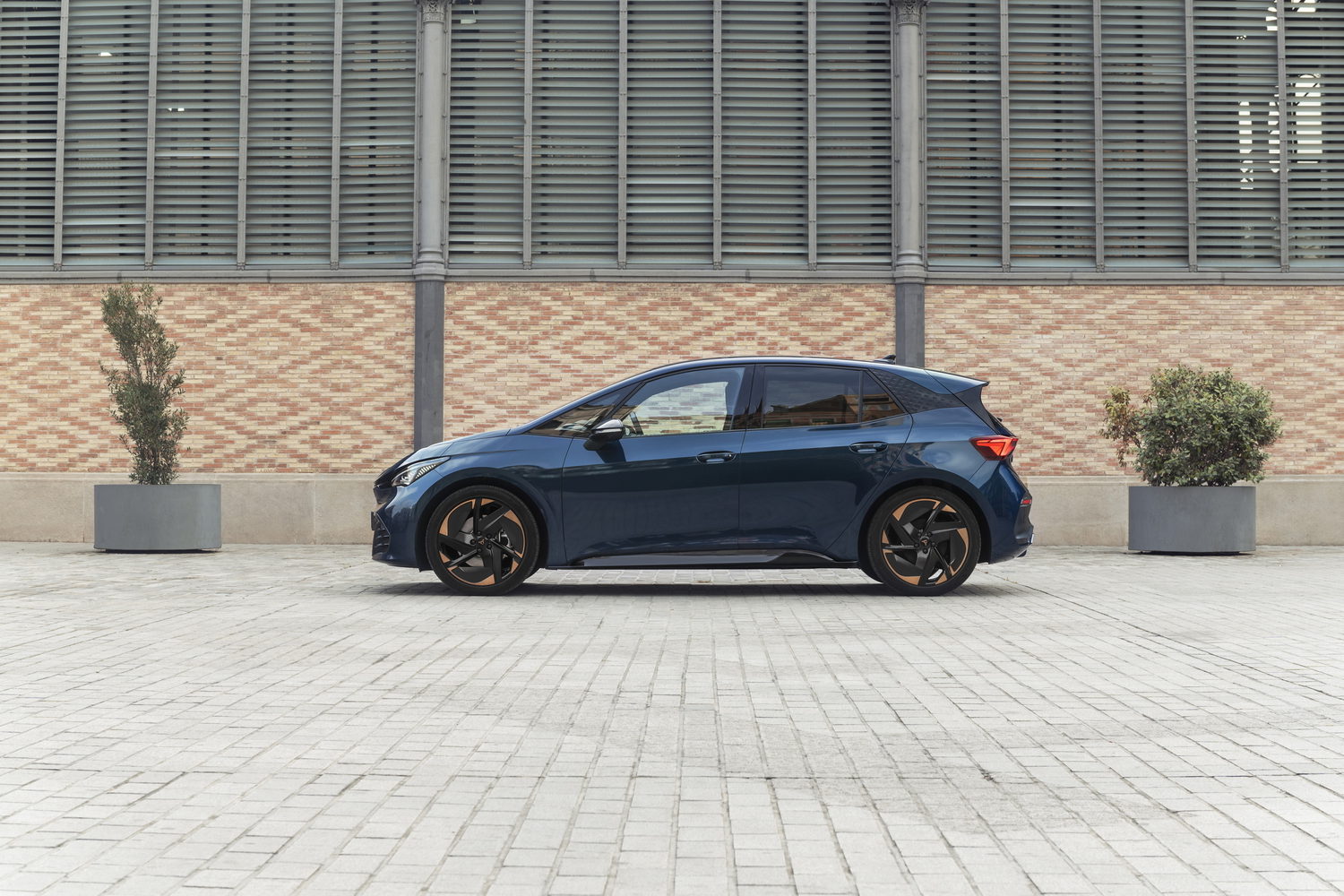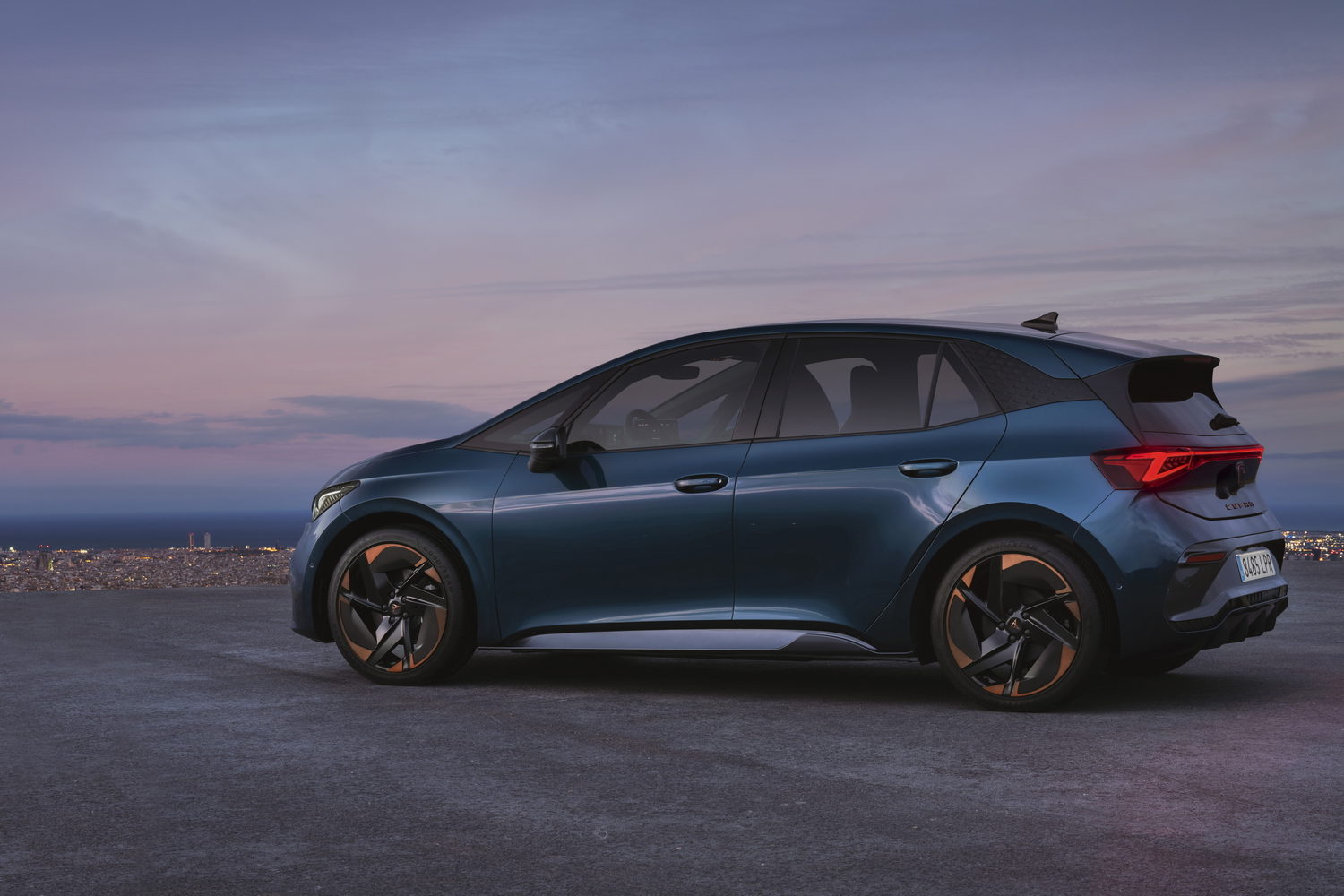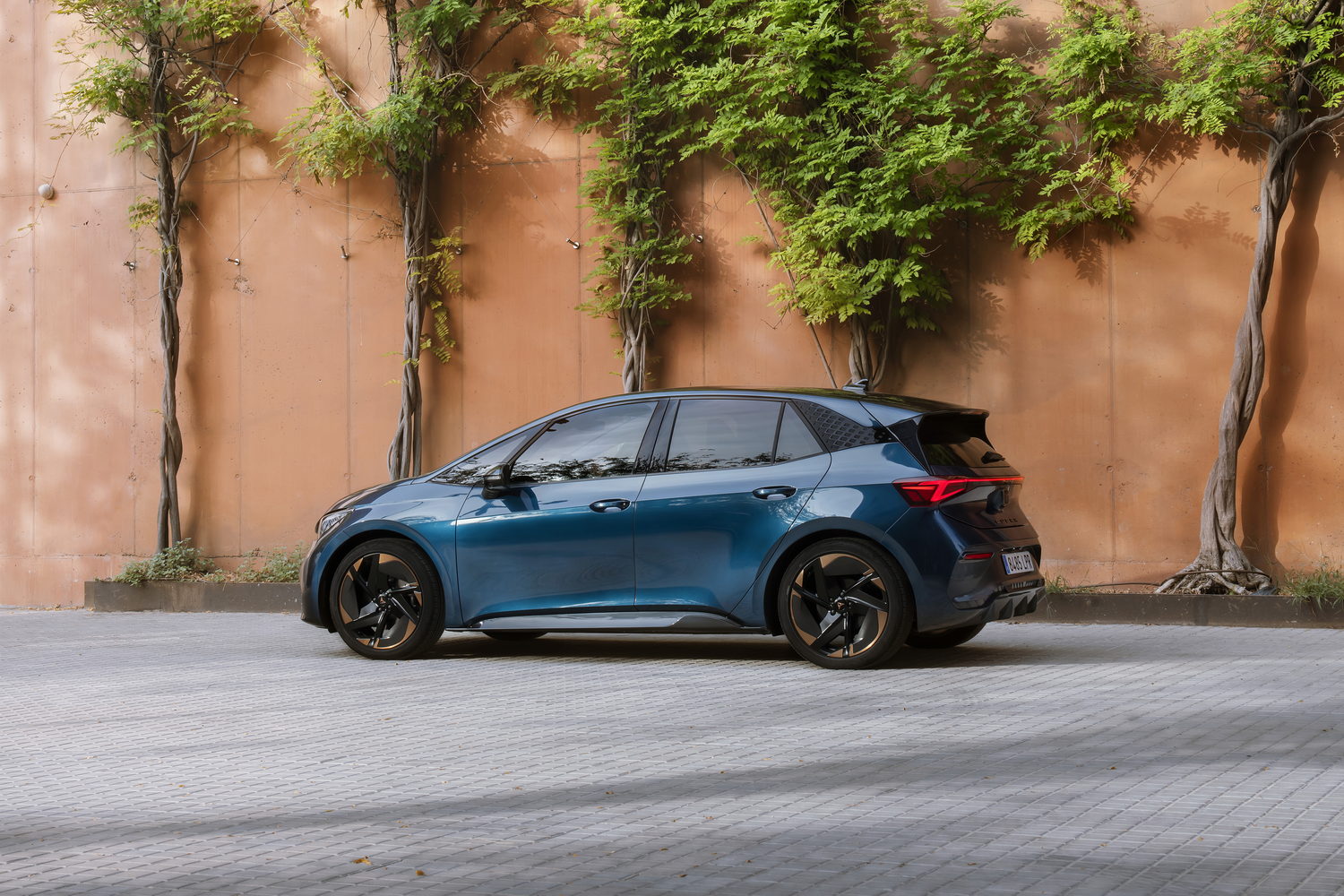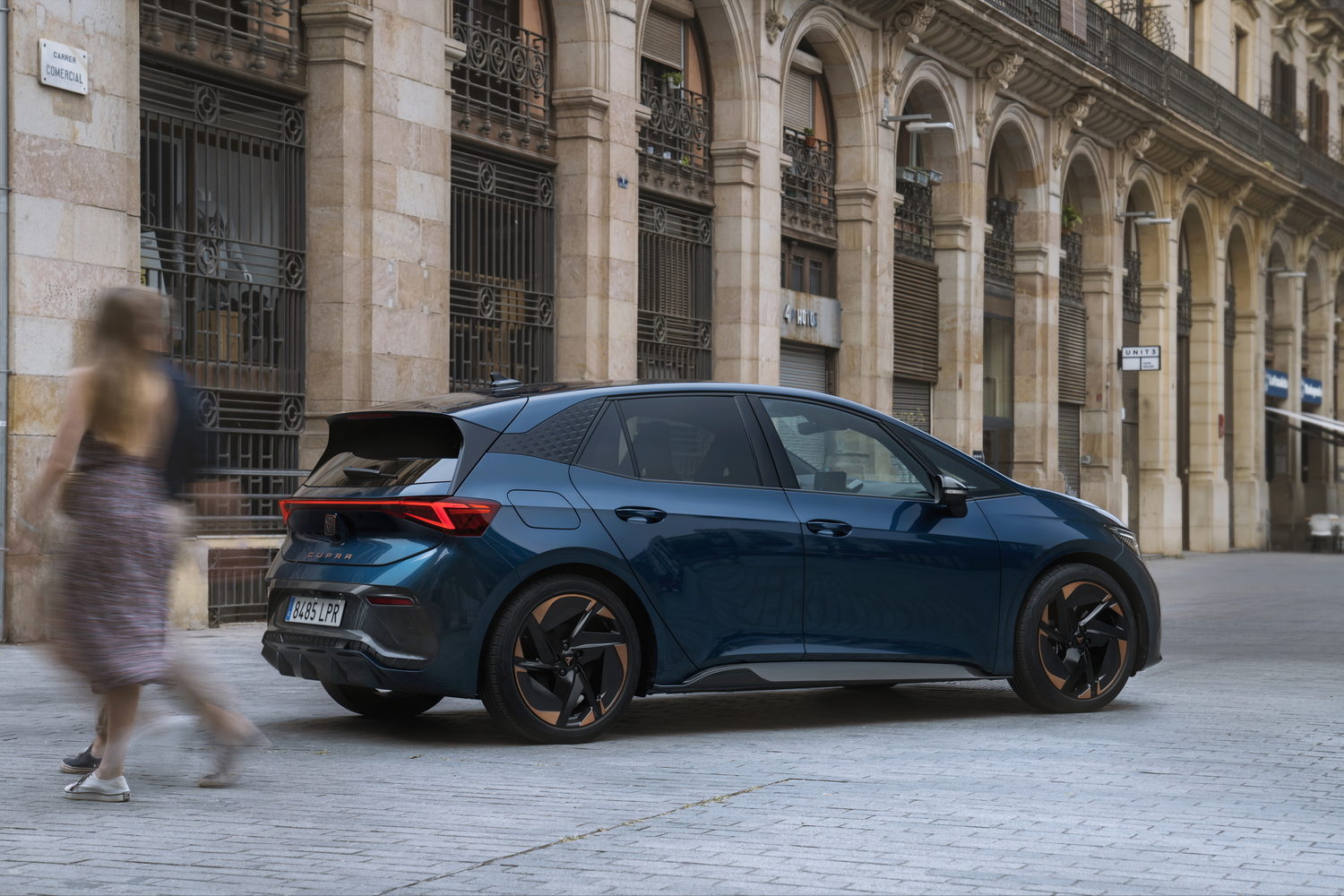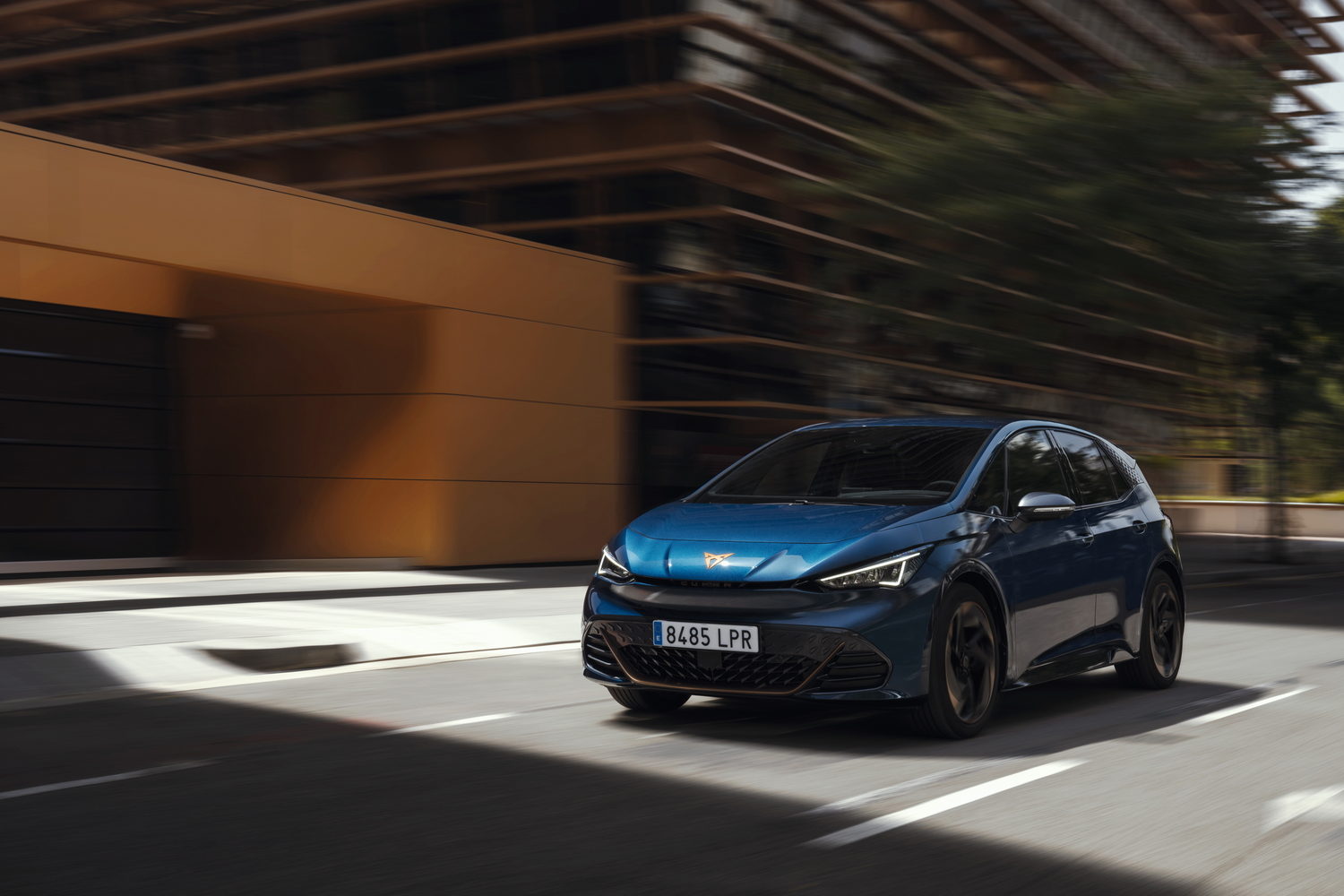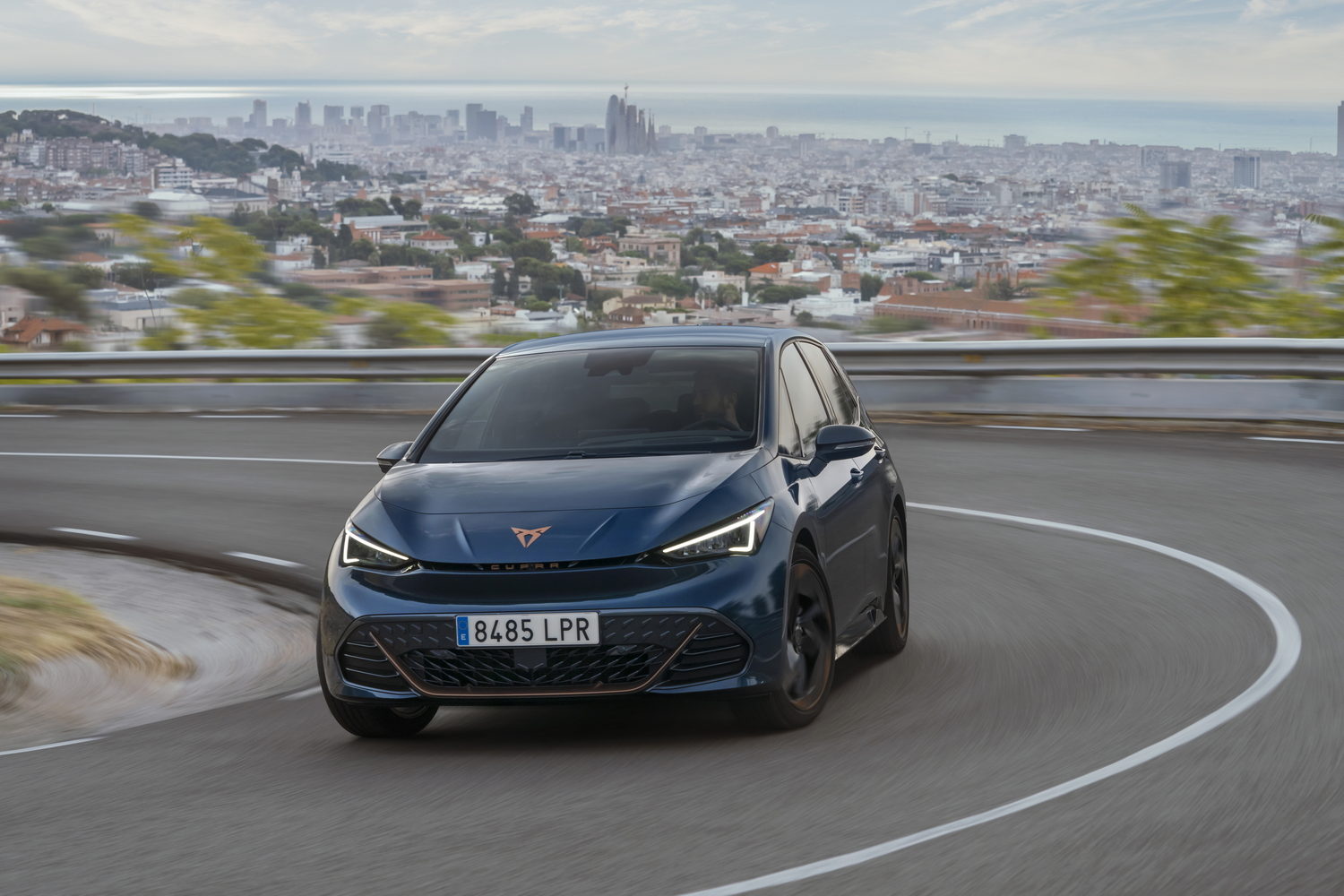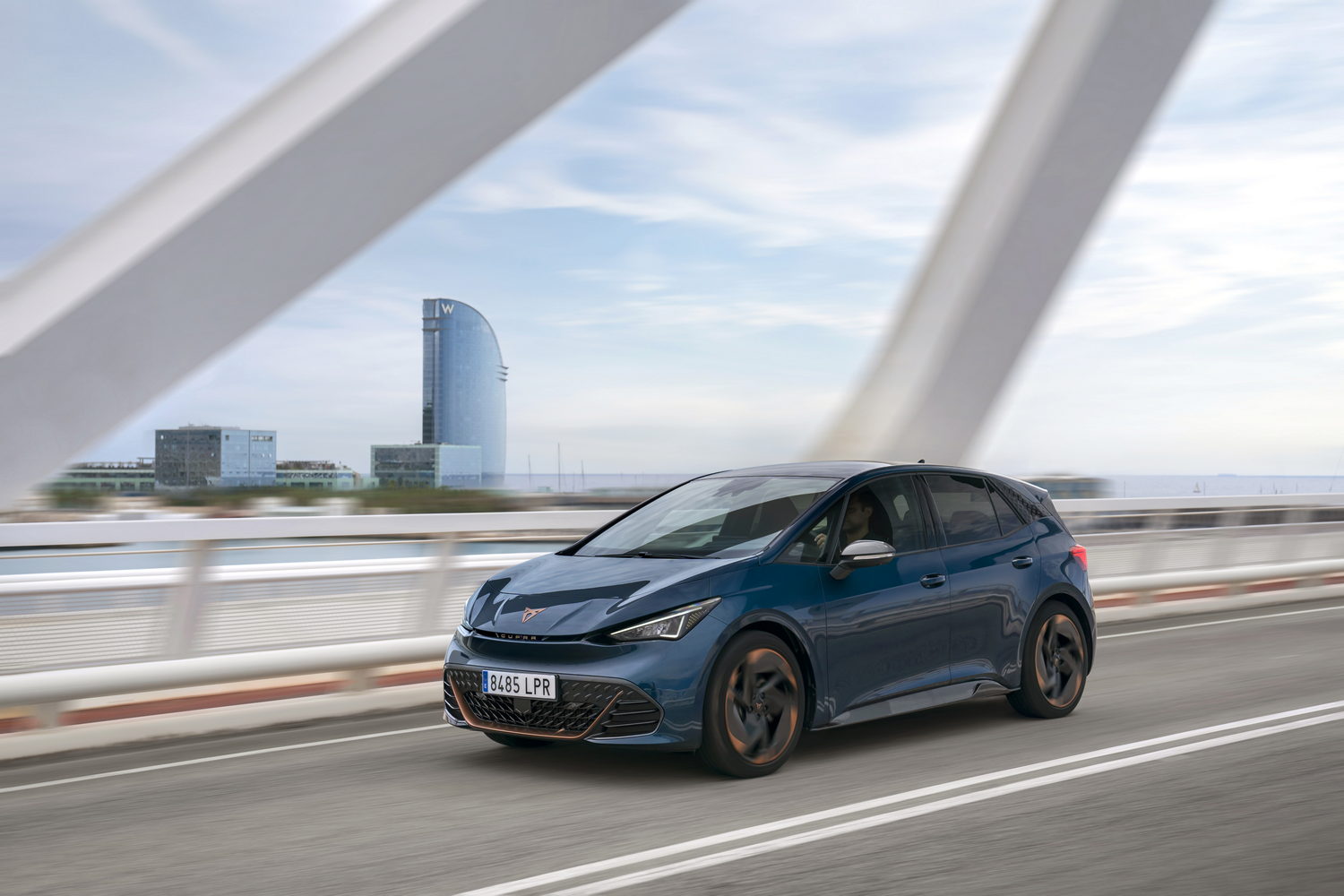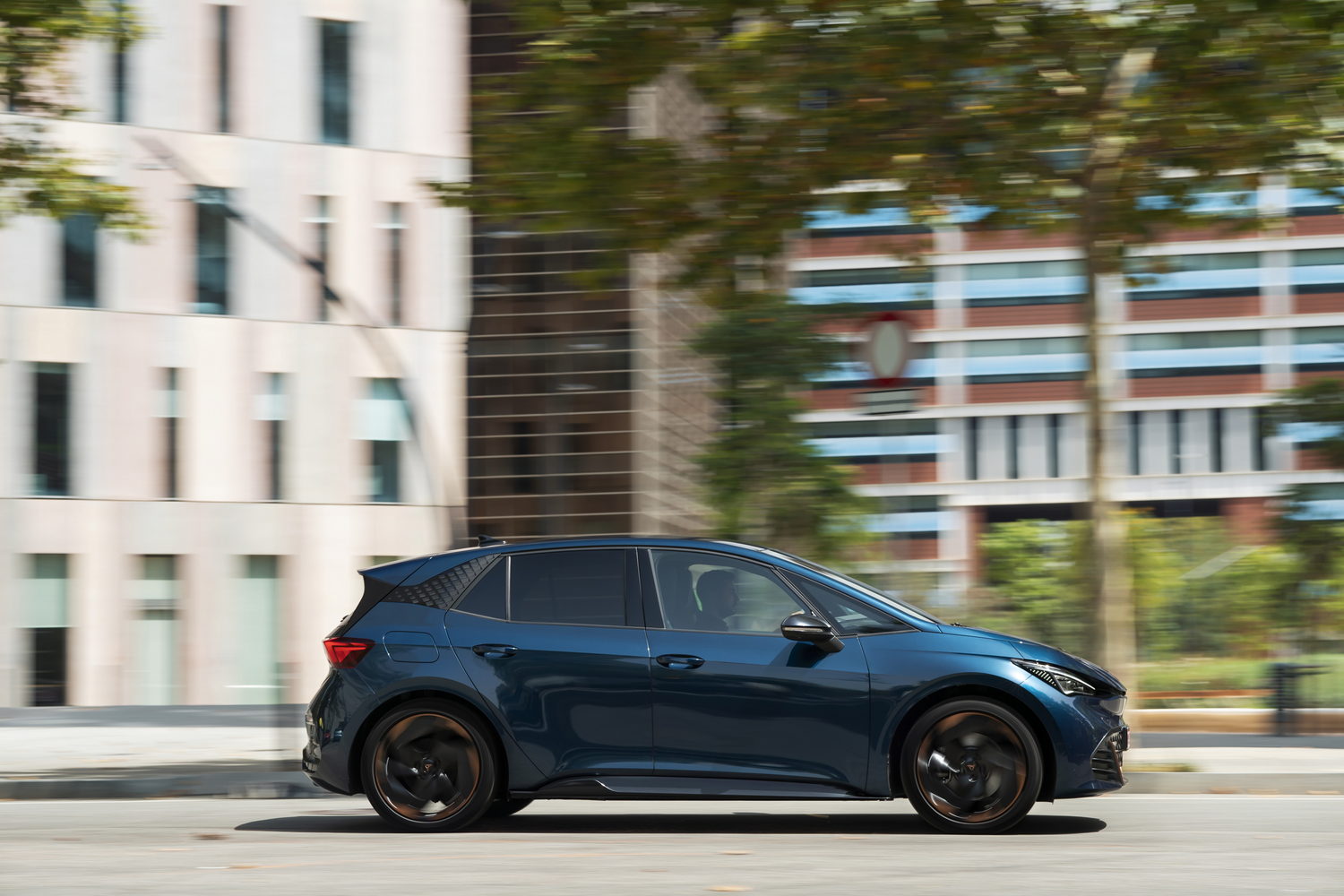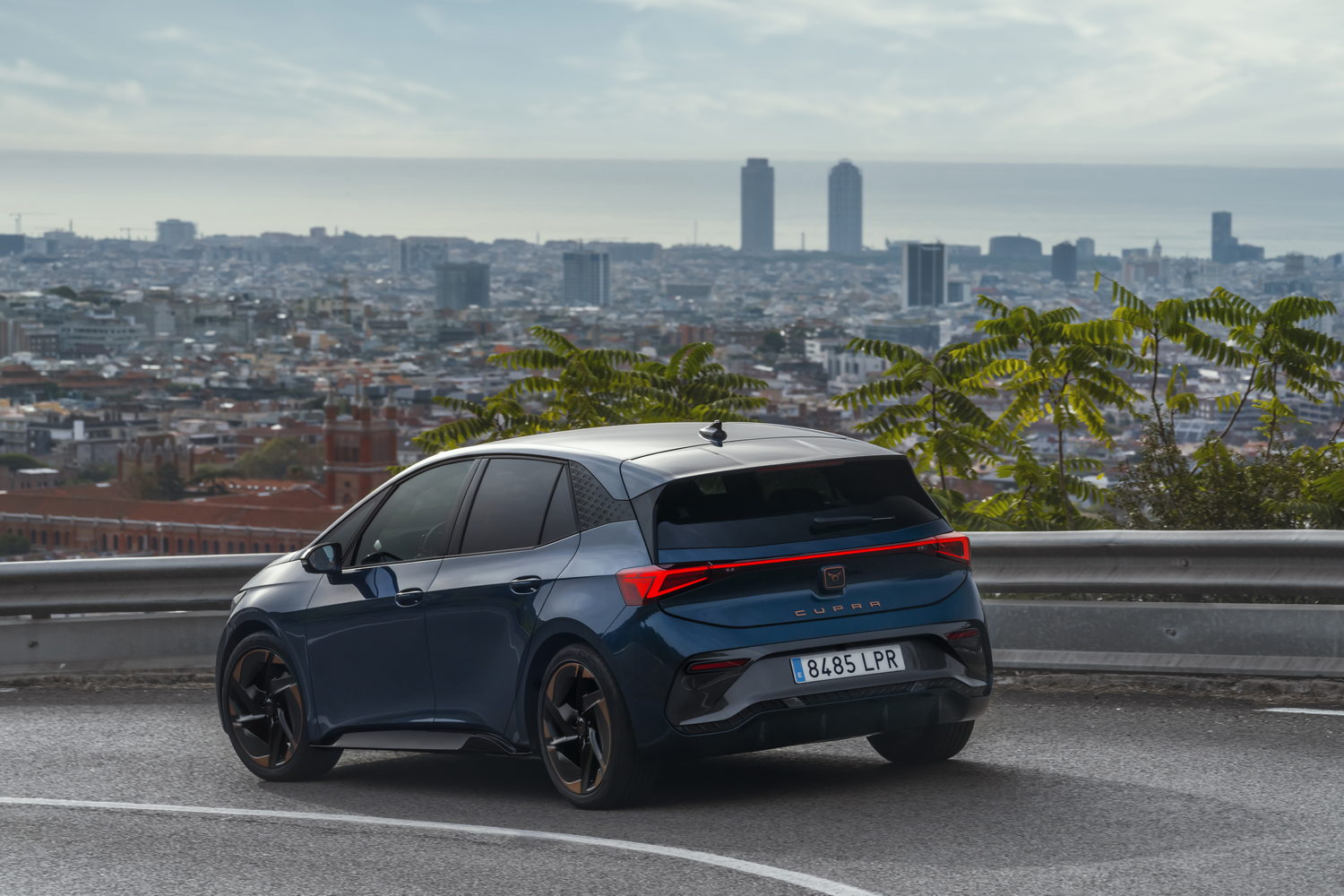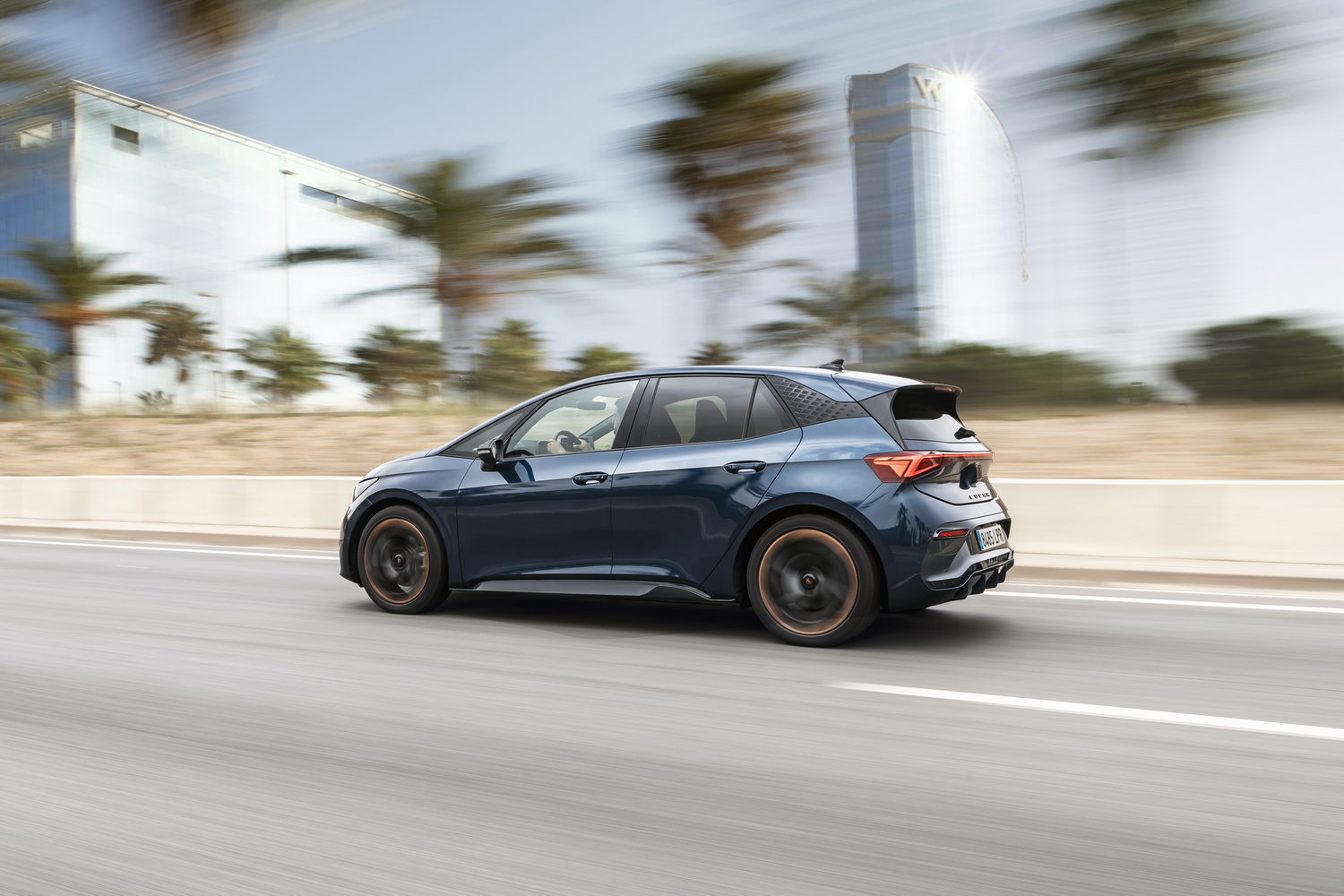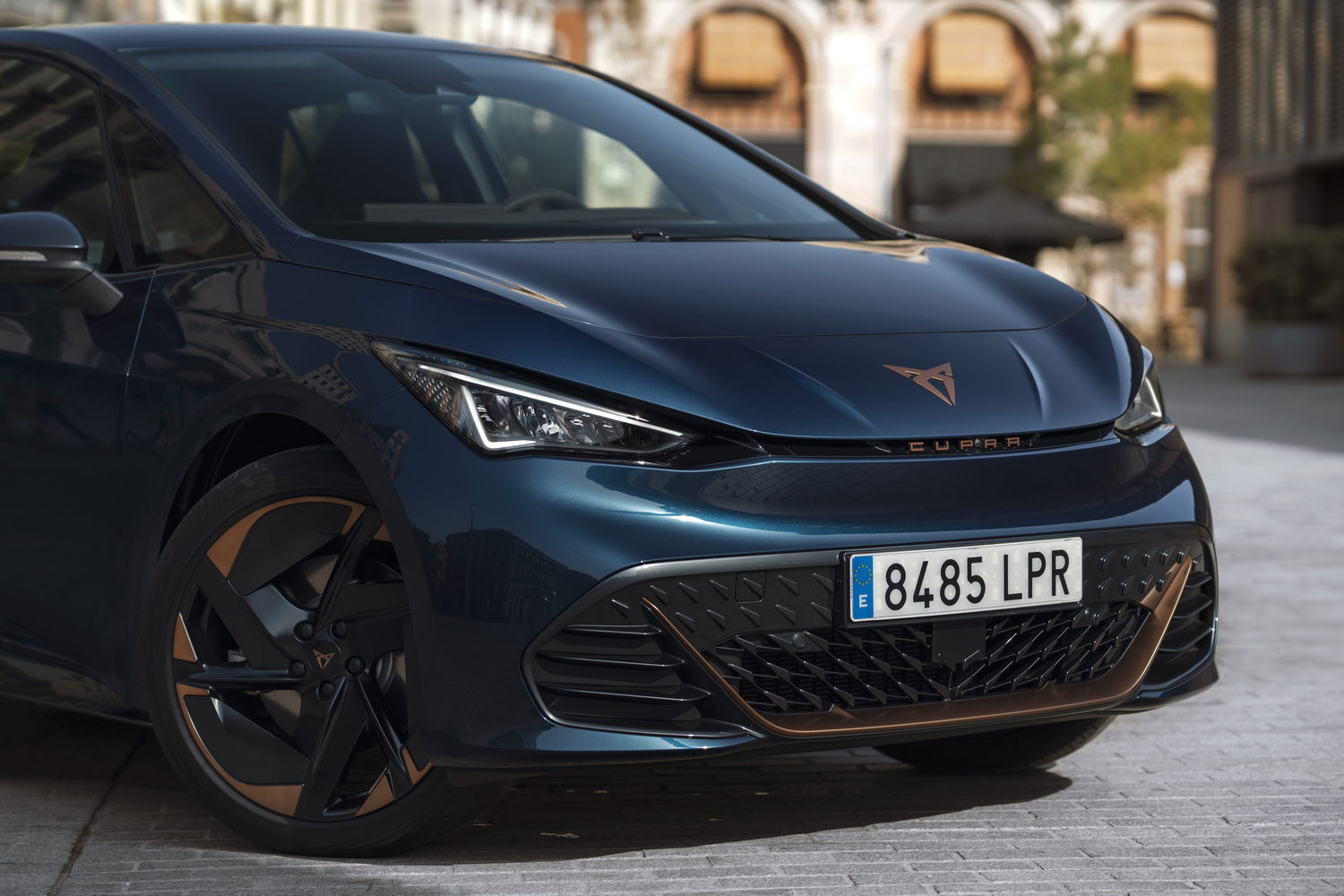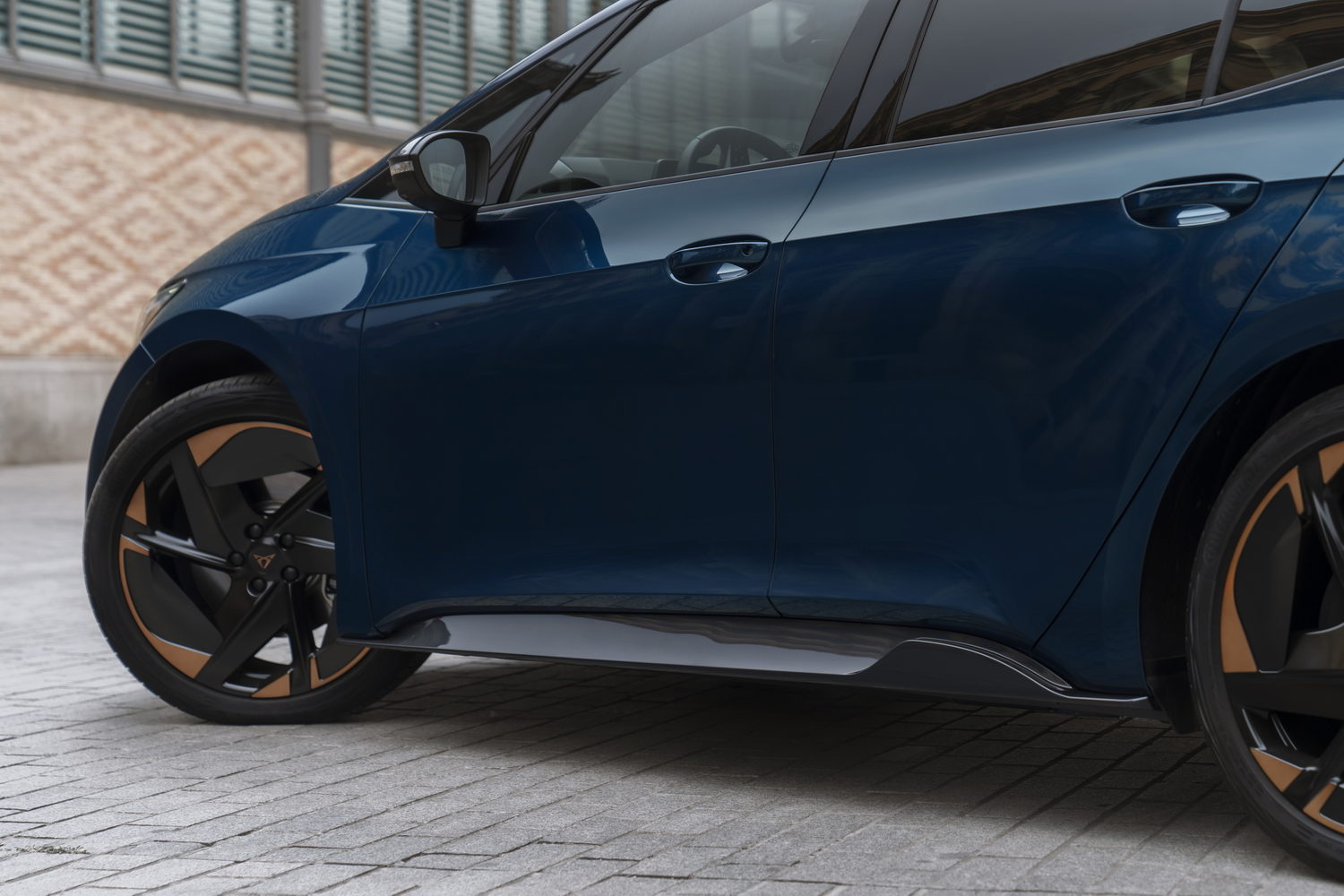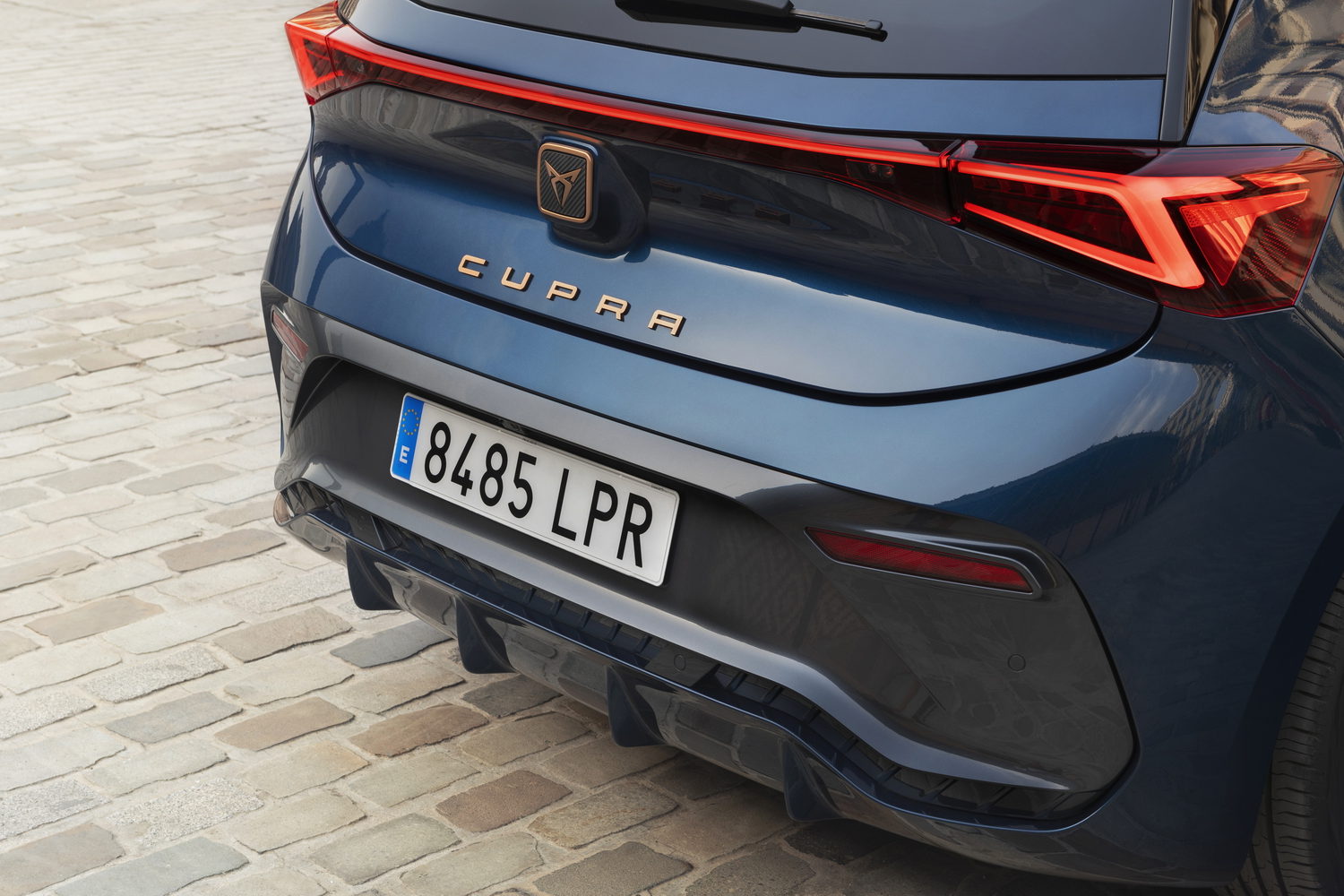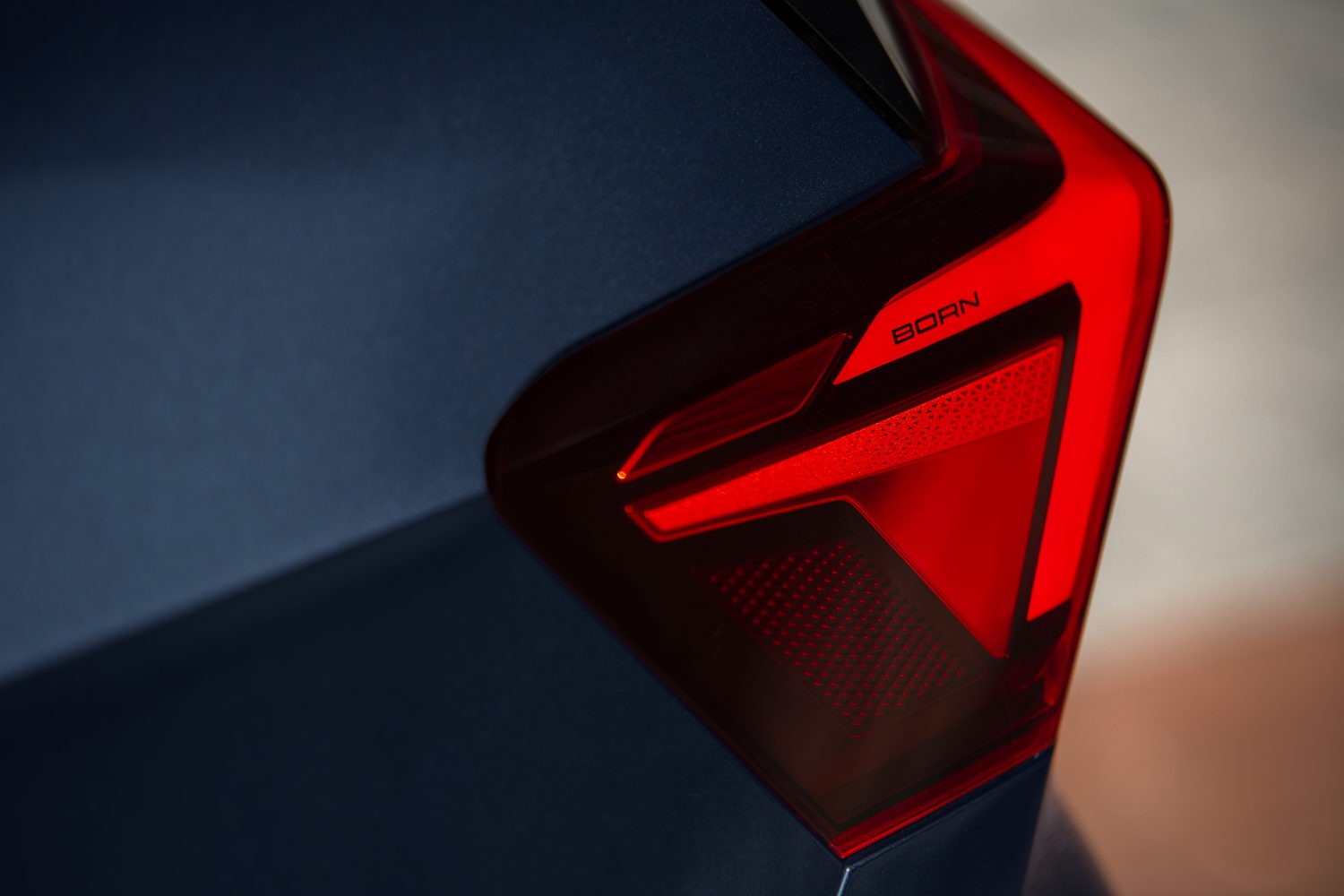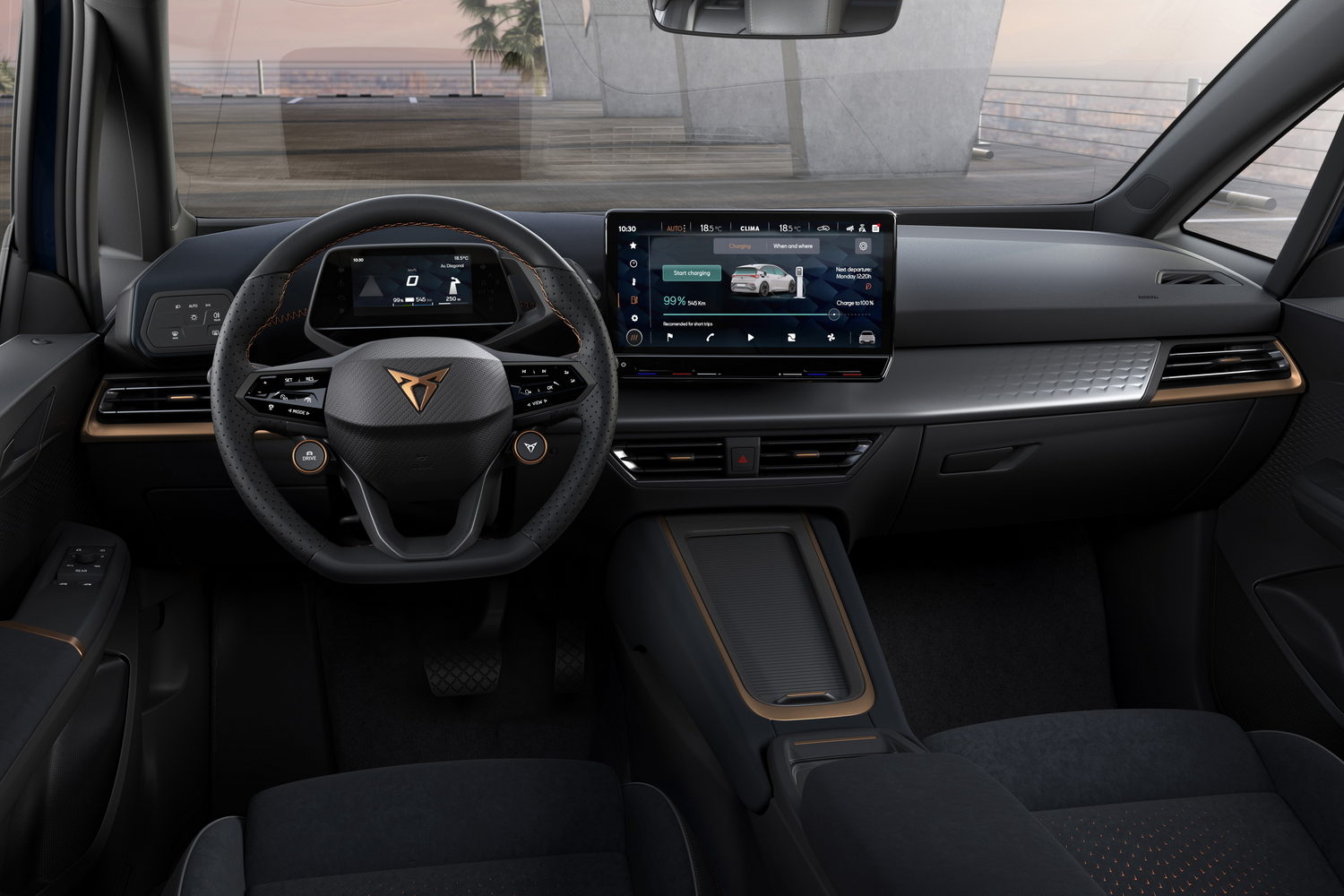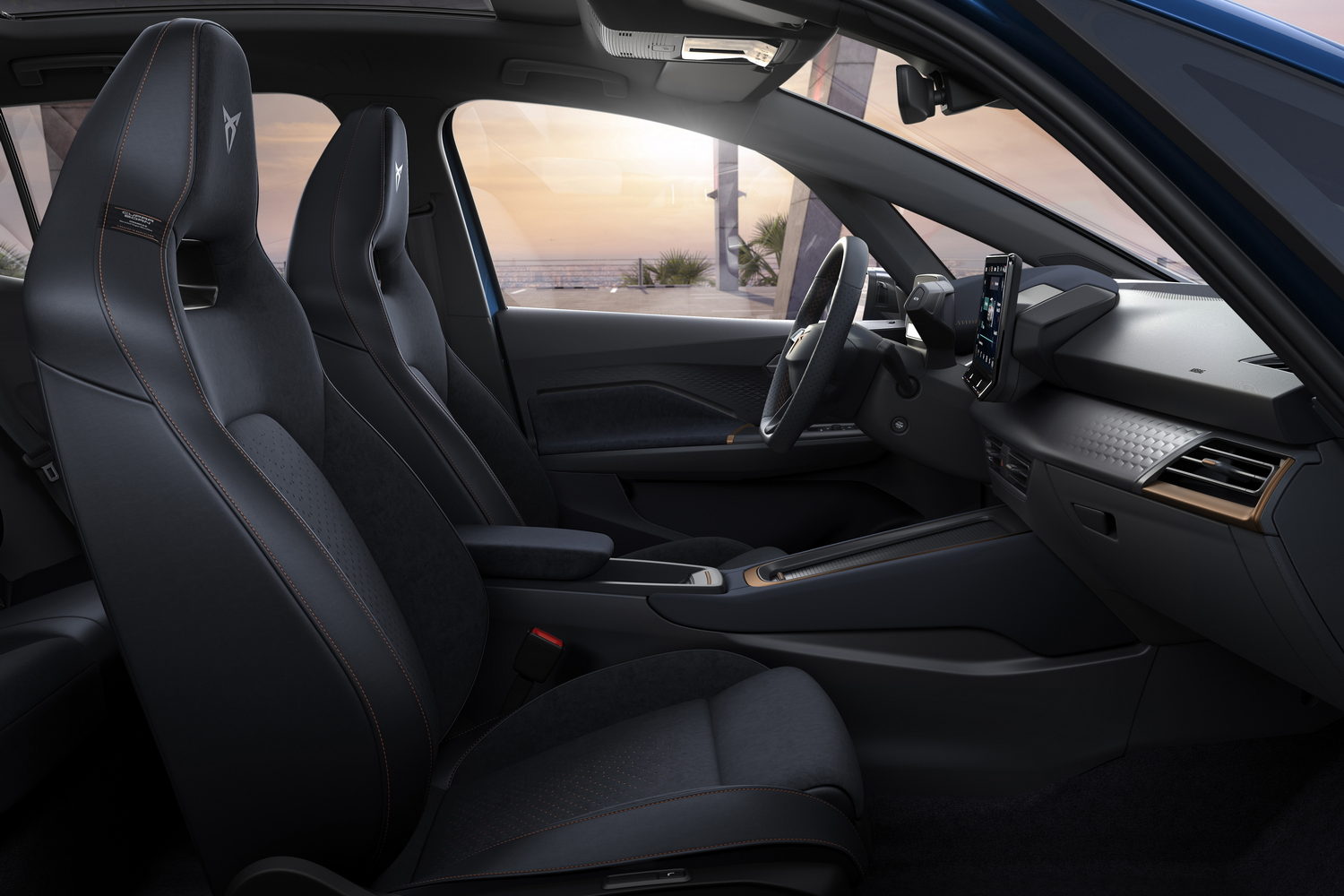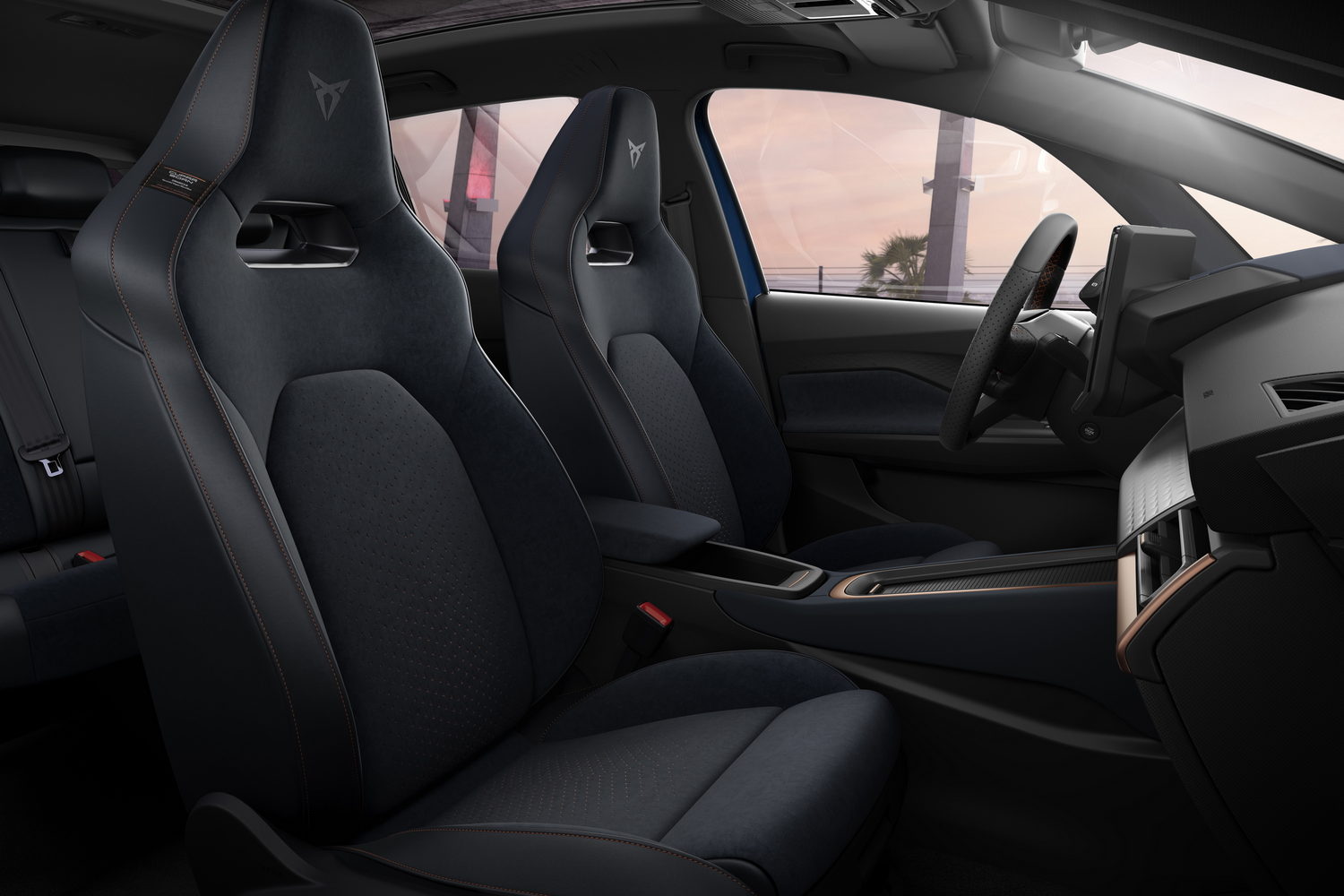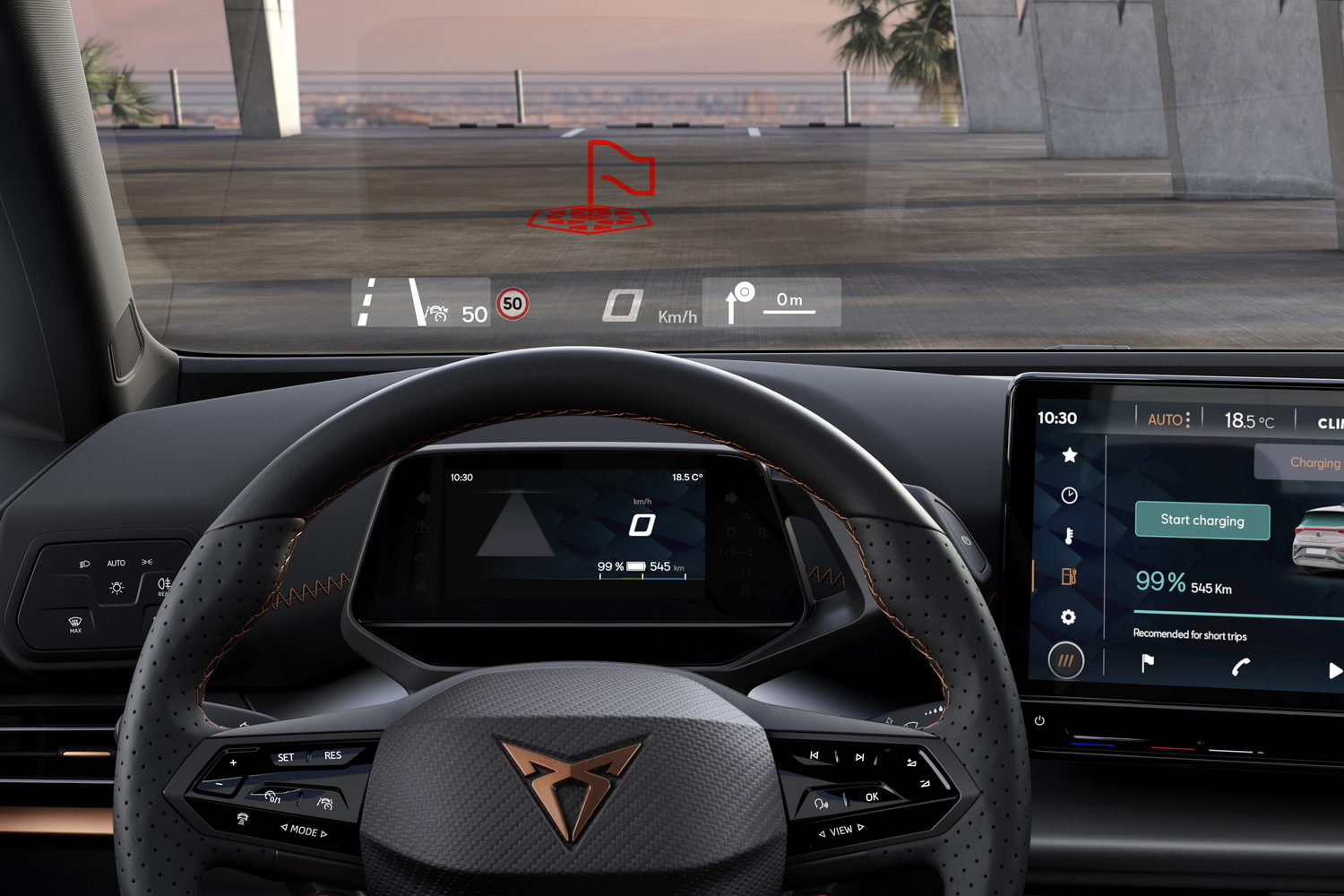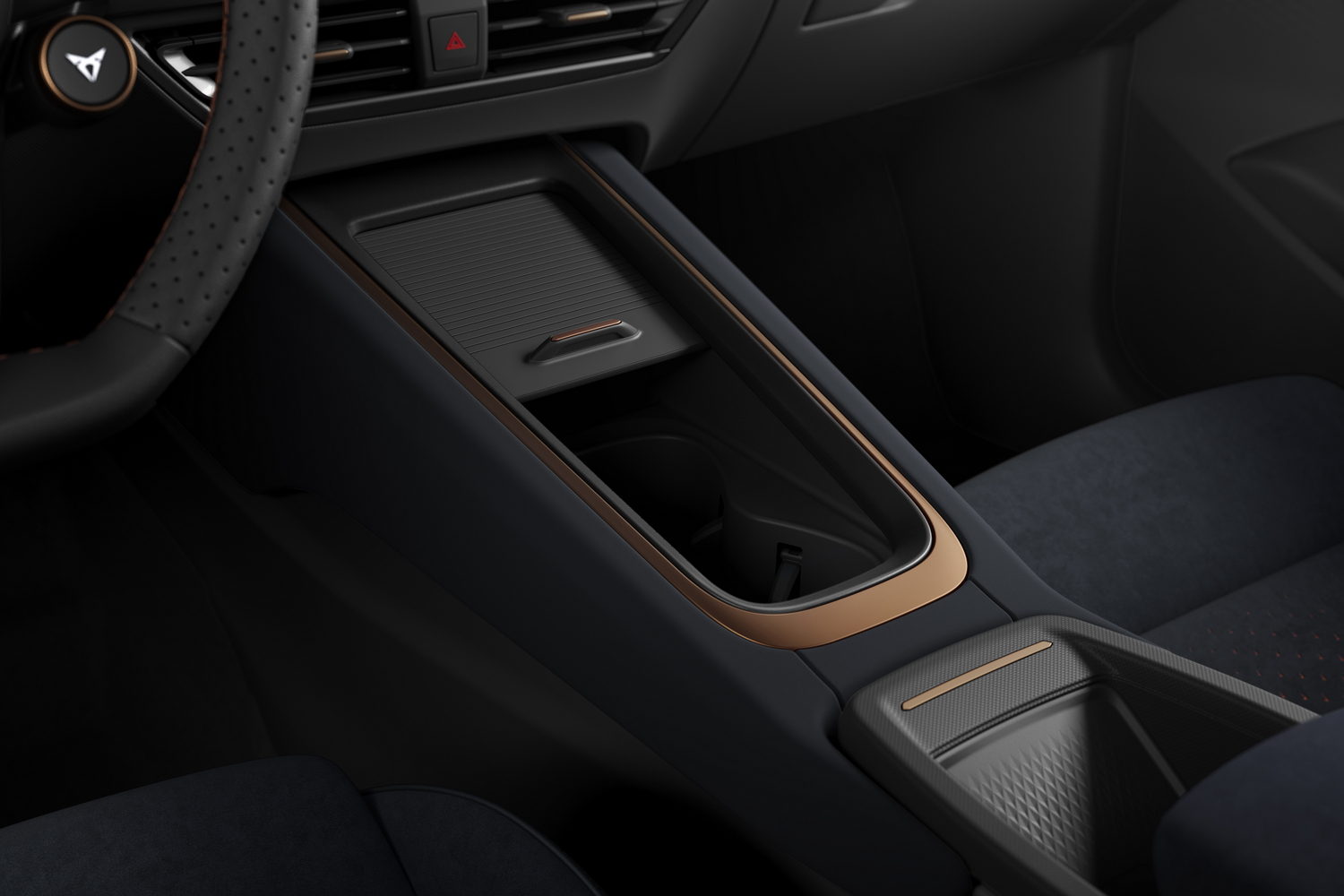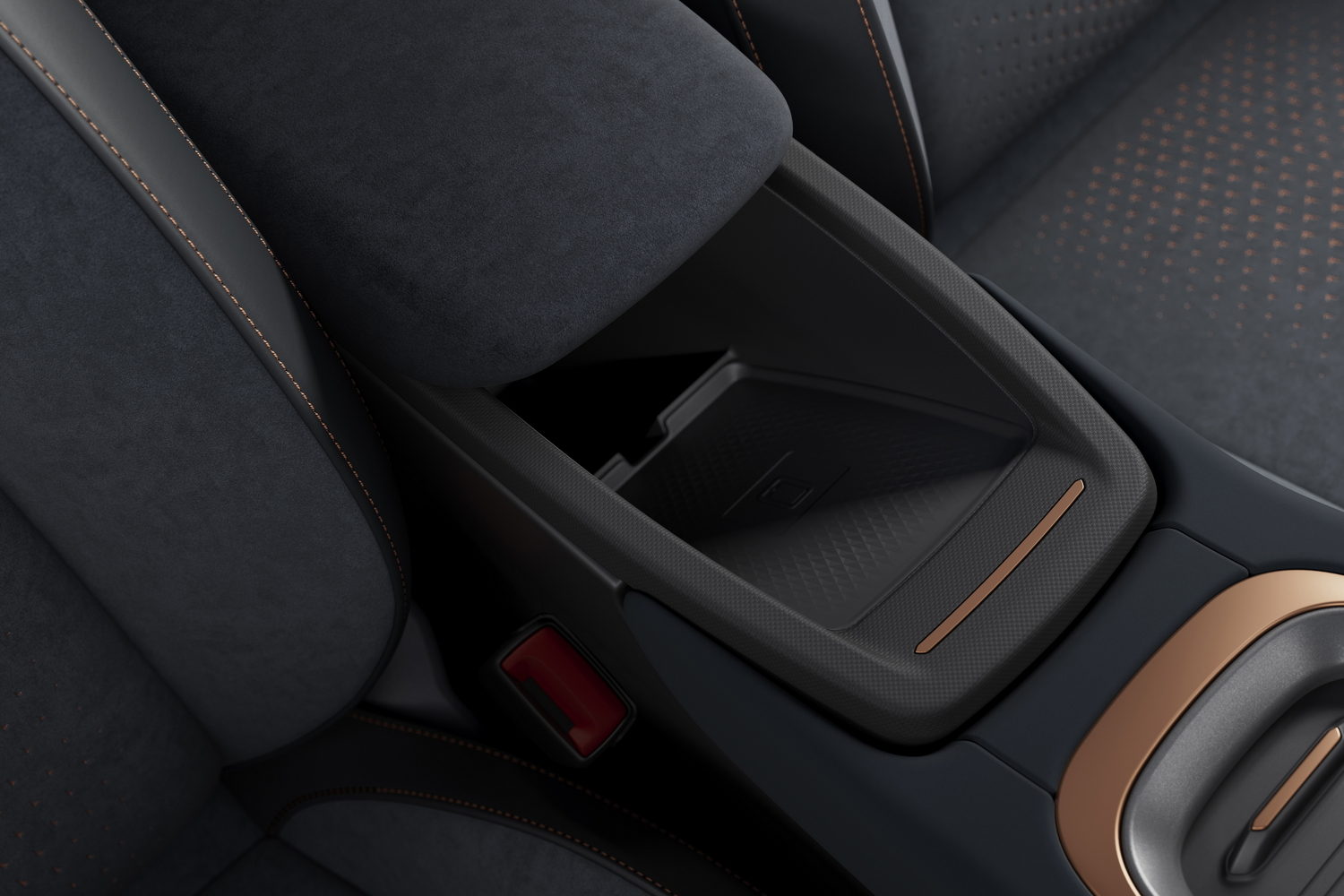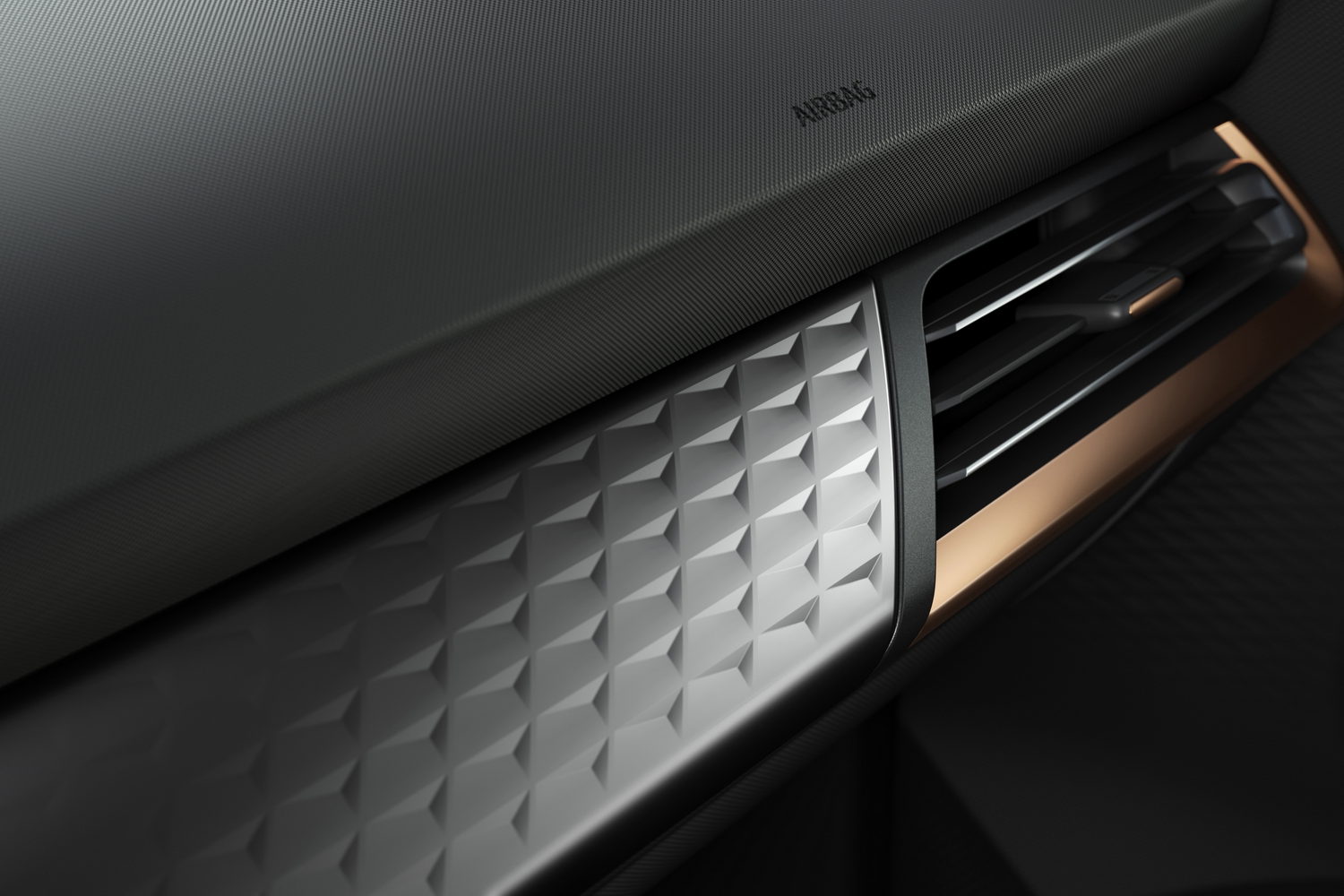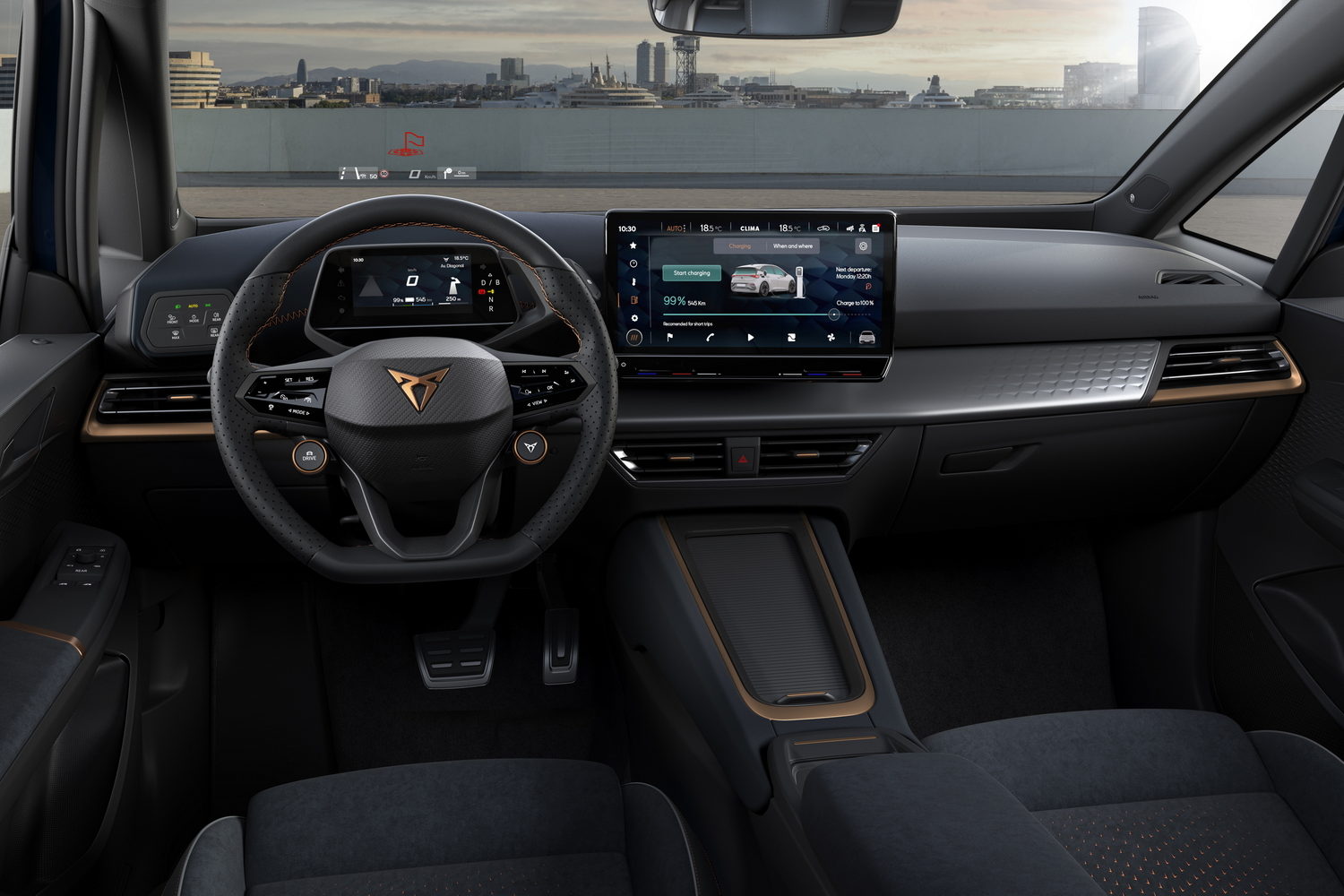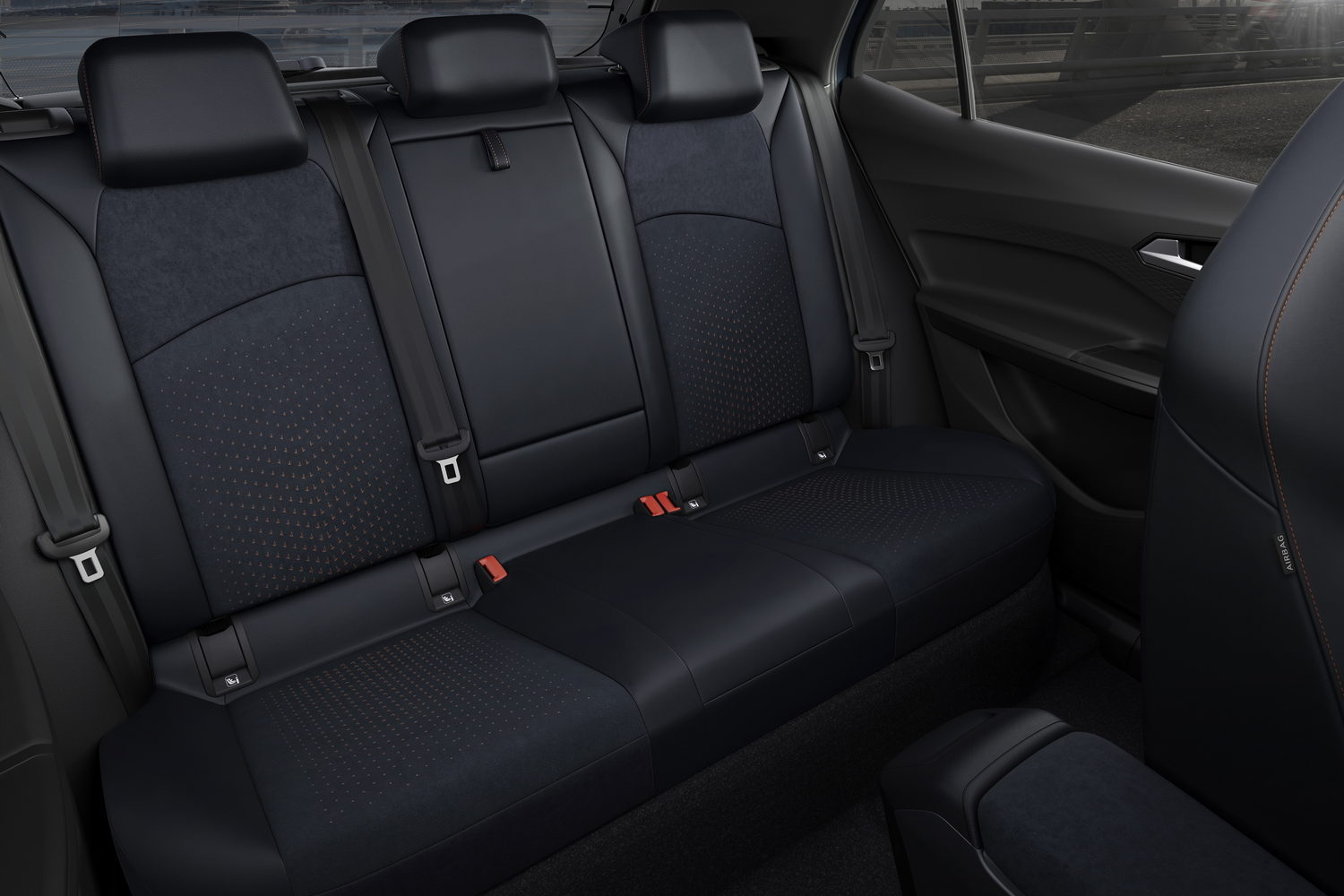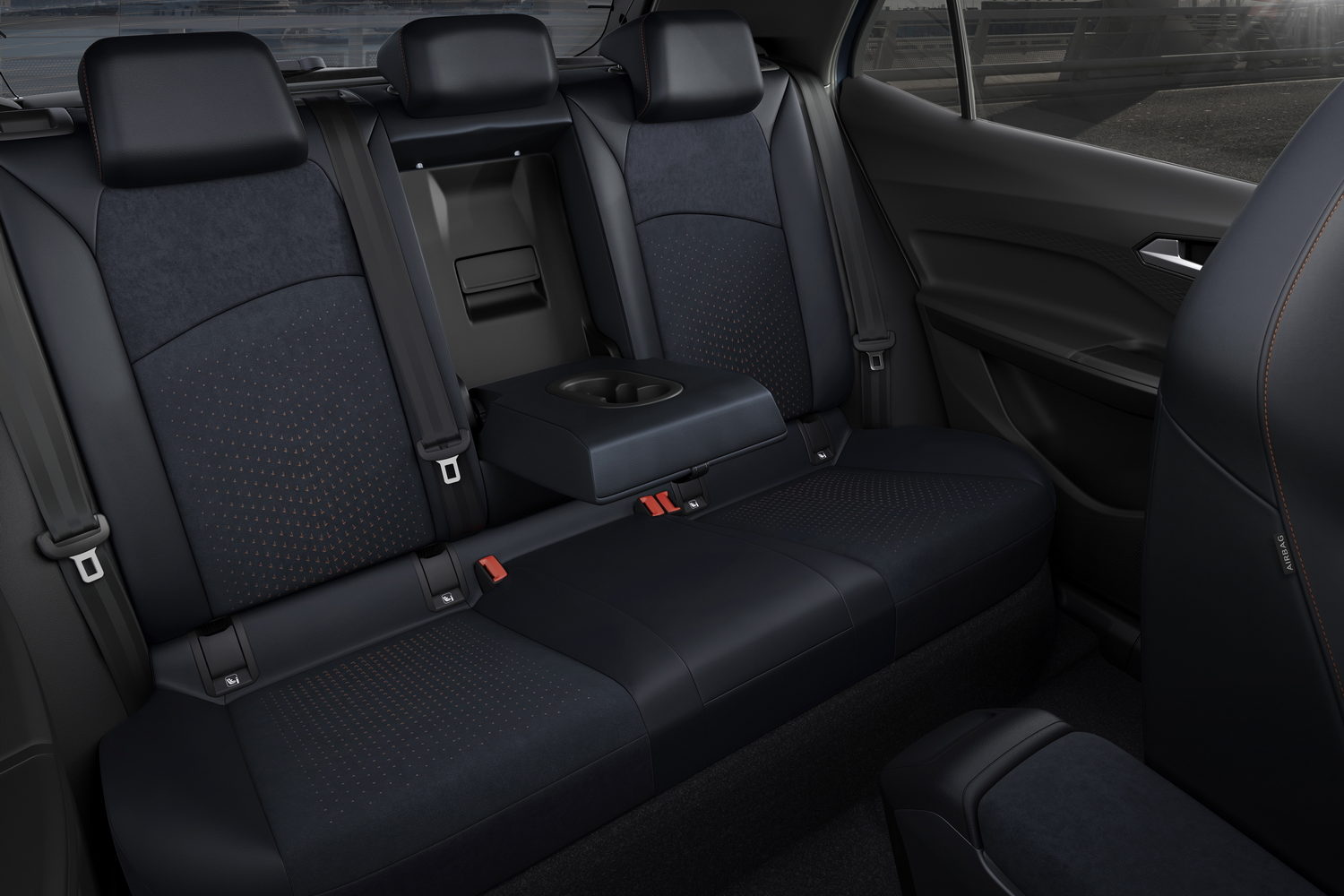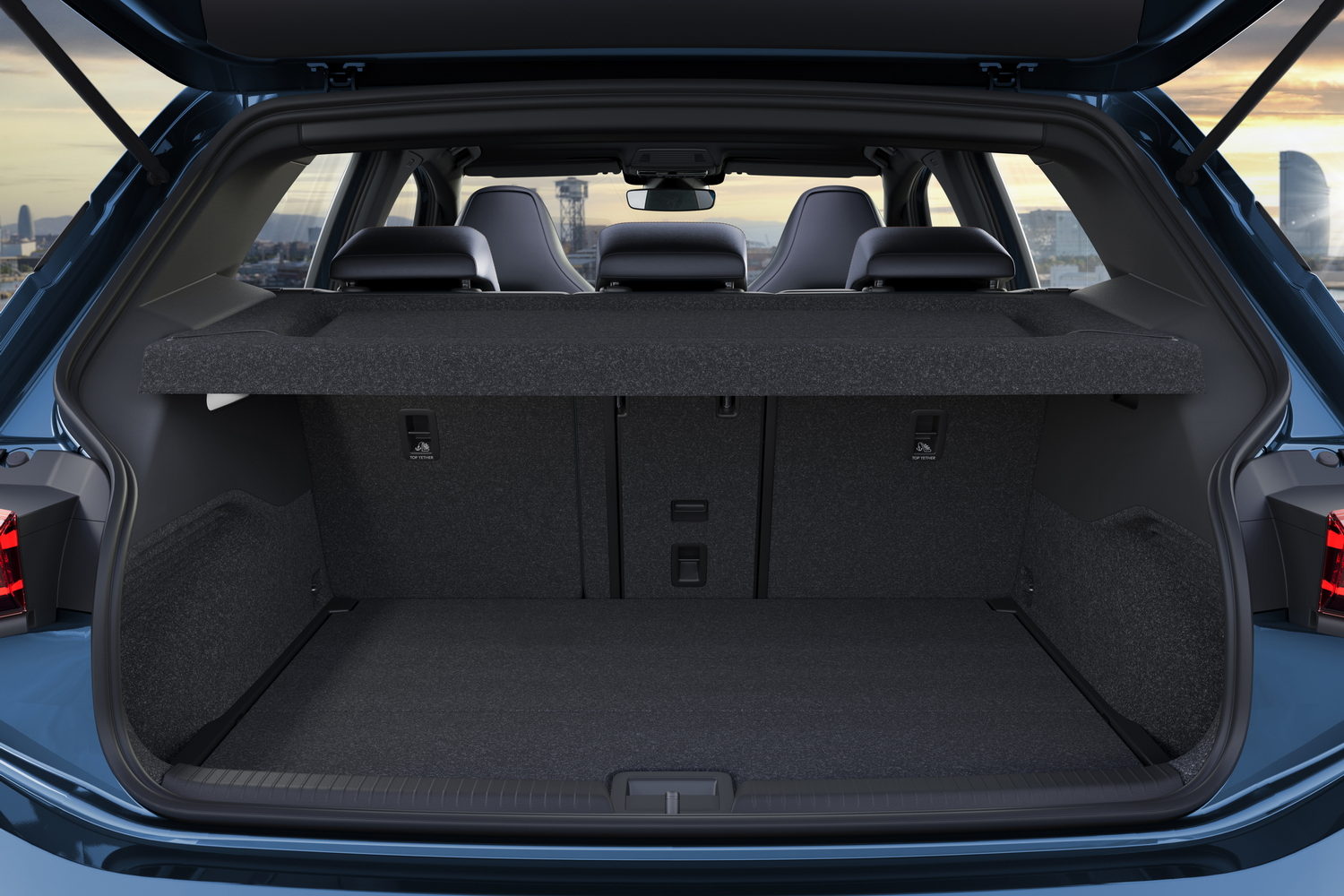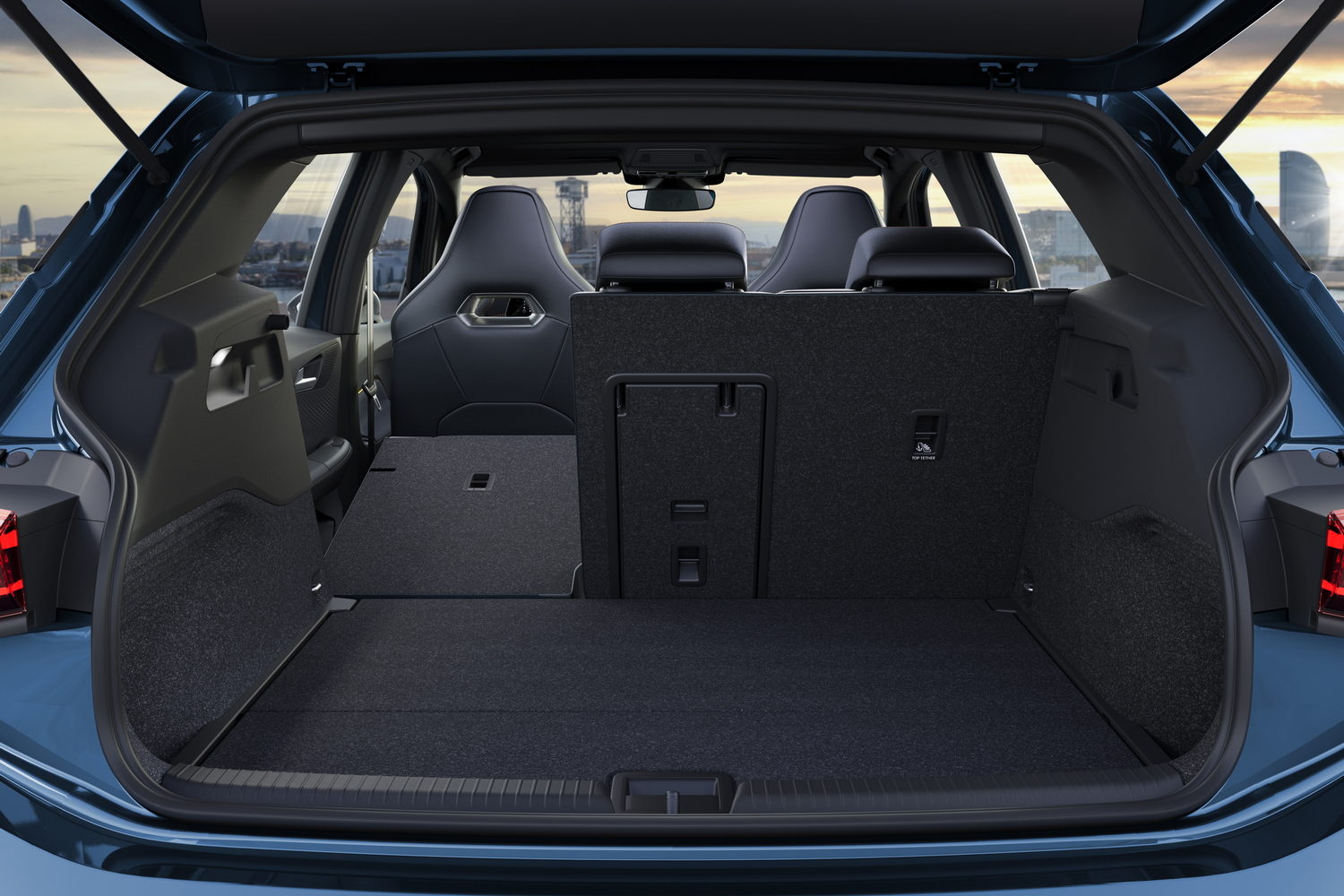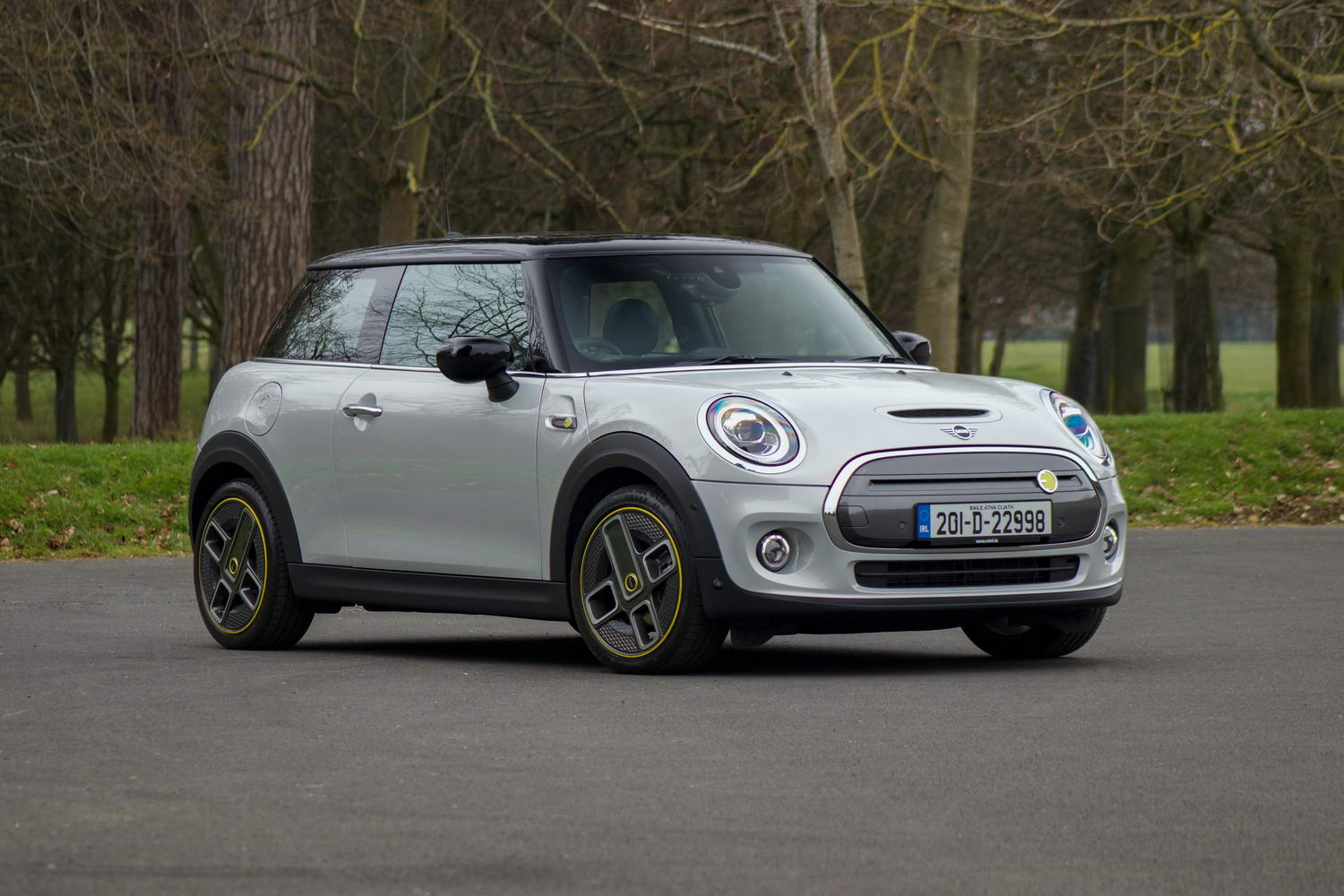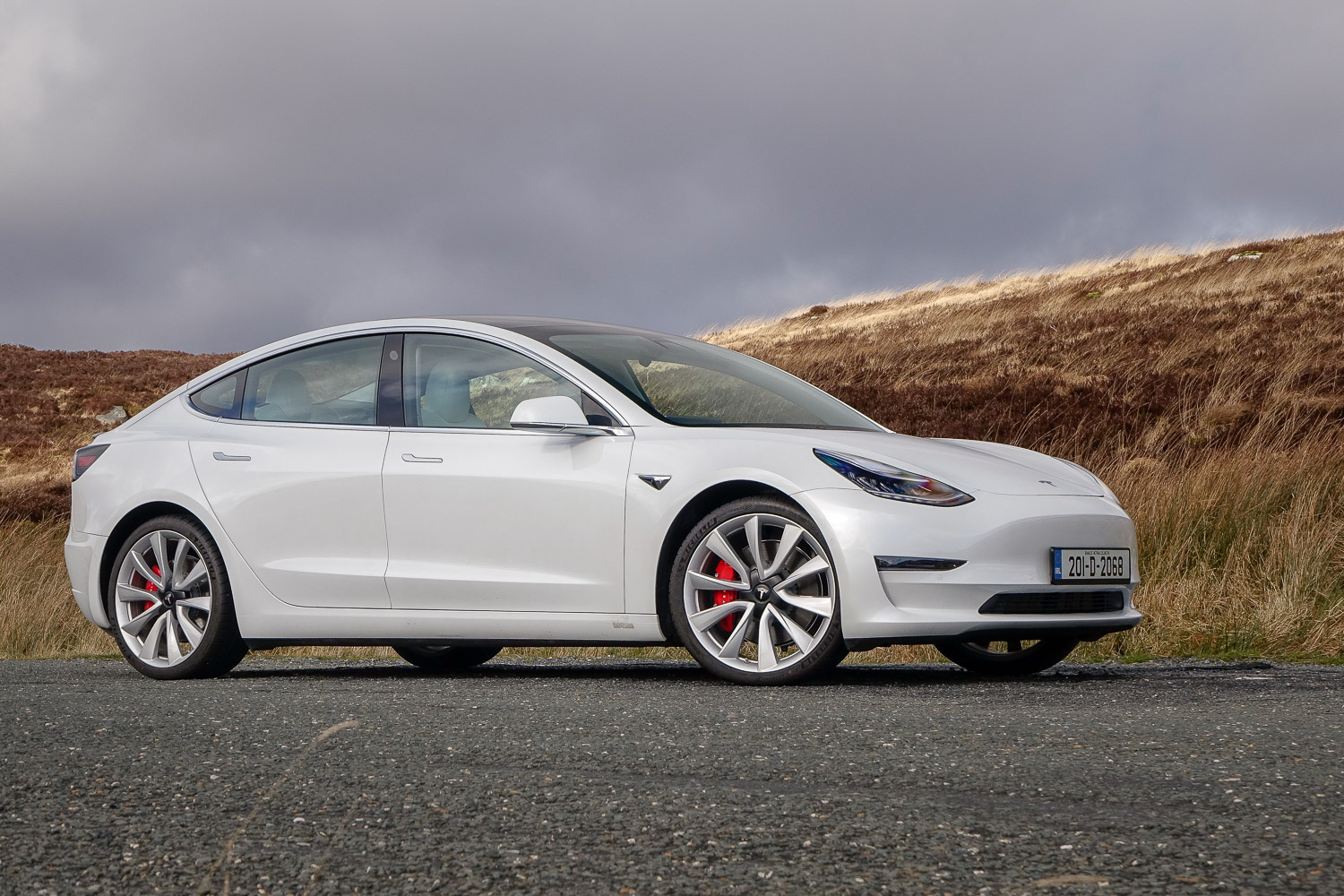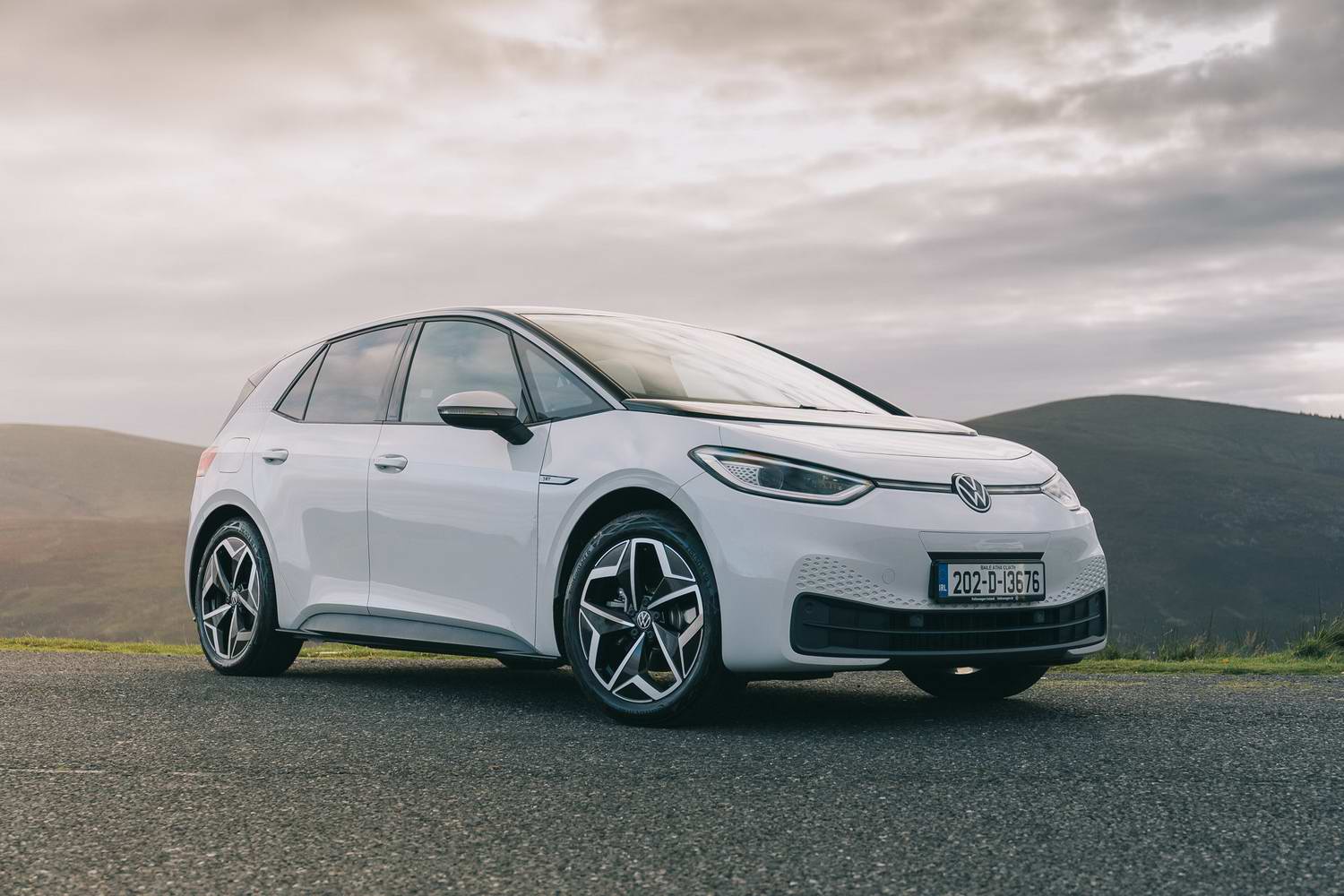As car makers shift towards a fully electric future, the sharing of platforms is a key factor in reducing costs, but the challenge to make a car stand out remains difficult. The Cupra Born uses much of the same architecture as the Volkswagen ID.3, but a drive in the Spanish car ahead of its arrival in Ireland in 2022 reveals the changes are more than skin deep.
In the metal
Having originally started life as the SEAT El Born concept, the Cupra Born has morphed into a slightly different looking car as it reaches production. That Cupra logo is supplemented by the name spelled out within the skinny grille element, while the bonnet is now more creased to bring greater focus on its centre. Combined with the LED headlights and lower bumper section that heightens the car's stance and presence, it has a certain menace to it that hints at the car's performance potential.
The copper-like inserts form part of the signature colour palette that spans the Cupra range and it's a hue that contrasts especially well with the Aurora Blue paintwork. Its 20-inch wheels not only carry a striking design but also emphasise the unique proportions the car has on account of its electric underpinnings. Its wheels are pushed out much further at either end than what you would typically see in a combustion-engined car, and it gives the Born a muscular appearance.
It would be wrong to say that the Born is merely a rebadged Volkswagen ID.3, as the more you look around the car the greater the differences become, even though some are subtle. Take the rear C-pillar section, for example. Normally blank or covered in an appliqué on the German car, the Born features a panel with three-dimensional triangular dimpling - a design element that continues to the interior. Lower down, the rocker panel that runs along the bottom sides of the car has a flick built into it giving the appearance of channelling airflow around the rear wheel. Meanwhile at the rear, the bumper section and tailgate are angled in a way as to give the impression of the car powering forward from its driven rear axle. There's 'coast-to-coast' lighting spanning the rear of the car also, which looks particularly distinctive at night.
Inside, the Cupra has a pleasingly high-quality look and feel. We do wonder how the copper theme will age, as there's no shortage of it woven throughout the cabin. The Born's layout apes the ID.3's, meaning a modestly sized digital instrument binnacle that also houses the drive selector, not unlike the one used in the BMW i3. A free-standing 12-inch touchscreen in the middle of the car includes a touch-sensitive base that allows adjustment of volume and temperature settings by sliding your finger along, an execution that works okay when stationary but is more hit-and-miss while driving.
The seats are produced using recycled materials that comes from a company called Seaqual, employing local fishers in Spain to collect marine plastic that is then recycled into a yarn that goes into producing the seats. Sporty bucket seats are standard fare in the Cupra, and they do hold you in place, though we found them to be just a bit on the firm side. Another recycled material, Dinamica, is a suede-like fabric that drapes the seats, centre and door armrests.
Space in the rear is quite good thanks to that elongated wheelbase, and we'd agree with Cupra's claims that it is on a par with a car one size segment up from the Born. A flat floor means that even though the middle seat is narrower, there's no lack of foot space. Both outer seats feature ISOFIX points and there are two USB-C ports in the back as well as the front. Boot capacity is 385 litres, five litres more than a Cupra Leon.
Driving it
Three battery sizes will be available, starting with 45kWh, followed by a mid-range 58kWh and topped off with a 77kWh unit (all values are the usable - or net - capacities). All versions get a rear-wheel-drive setup too, with power outputs varying between 150hp and 231hp. The latter is thanks to the e-Boost Performance Pack, which is available only with the two larger battery sizes. It gives a 27hp bump in power for brief periods depending on the state of battery charge.
Part of the bespoke chassis setup of the Cupra compared to the ID.3 is the suspension, which lowers the car's ride height by 15mm on the front axle and 10mm at the rear. That difference is noticeable, but the firmness doesn't lead to a harshness in the primary ride. Good work has been done with the damper setup to ensure that even on the larger 20-inch wheels it's possible to roll over sharper objects such as speed humps without grimacing.
Having the wheels pushed out to each corner makes the car seem very manoeuvrable and nimble, particularly noticeable when dealing with quick-moving city traffic. Utilising all 310Nm of torque gives it some real zip and it powers out of corners with the same impetus as a hot hatch, albeit in a linear fashion with no gearchanges.
There are a number of driving modes to choose from and the e-Boost Performance Pack comes with an extra Cupra mode that is activated via a steering wheel button. The optional DCC (Dynamic Chassis Control) lets the driver further fine tune the driving experience, too. While the Born is a rear-wheel-drive car, the output and delivery of power doesn't overwhelm the rear tyres. Equally, the specially tuned stability control doesn't noticeably interfere even during more spirited driving periods, and it can be deactivated. Wide section tyres add lots of grip in the dry, so the Cupra holds its line well through faster bends and handles direction changes without fuss. The body control is faultless and larger brake discs that are exclusive to the e-Boost Performance Pack give it excellent braking performance.
What you get for your money
The Cupra Born will be available with all three battery options in Ireland, including the more potent e-Boost Performance Pack. The full range pricing is still to be confirmed but it is expected to have a starting price of just under €39,000 excluding grants. When the full Irish pricing is released, this section will be updated.
Summary
You'll not be disappointed by how the Cupra Born drives. An established platform and in-house know-how of chassis and suspension tuning makes this one of the better electric cars from behind the wheel. Teamed up with an attractive design inside and out and the choice of three battery options, the Born is one to watch next year.

